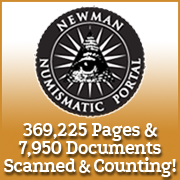
About UsThe Numismatic Bibliomania Society is a non-profit organization devoted to the study and enjoyment of numismatic literature. For more information please see our web site at coinbooks.org SubscriptionsThose wishing to become new E-Sylum subscribers (or wishing to Unsubscribe) can go to the following web page link MembershipThere is a membership application available on the web site Membership Application To join, print the application and return it with your check to the address printed on the application. Membership is only $20 to addresses in the U.S., $25 for First Class mail, and $30 elsewhere. For those without web access, write to: Terry White, Treasurer AsylumFor Asylum mailing address changes and other membership questions, contact Terry at this email address: terrywhite5475@yahoo.com SubmissionsTo submit items for publication in The E-Sylum, just Reply to this message, or write to the Editor at this address: whomren@gmail.com
BUY THE BOOK BEFORE THE COIN |
- WAYNE'S WORDS: THE E-SYLUM AUGUST 7, 2016
- NBS EVENTS PLANNED FOR 2016 WORLD'S FAIR OF MONEY
- COLONIAL COIN FORGER THOMAS WYATT LETTERS OFFERED
- CHARLES DAVIS AT 2016 ANA WORLD'S FAIR OF MONEY
- NEW BOOK: MEDALLIC WASHINGTON
- NEW BOOK: ARMENIAN COINAGE IN THE CLASSICAL PERIOD
- NEW BOOK: 4TH SIMONE ASSEMANI SYMPOSIUM ON ISLAMIC COINS
- NEW PERIODICAL: UNAN NUMISMáTICA
- BOOK REVIEW: THE GOLD INDIANS OF BELA LYON PRATT
- BOOK REVIEW: OLYMPIC COINS
- THE FRANK L. KOVACS NUMISMATIC LIBRARY
- ANA CLUB PUBLICATIONS AWARD WINNERS
- NEWMAN PORTAL DIGITIZES BARBER COIN JOURNAL
- THE NEWMAN PORTAL AT 2016 ANA WORLD'S FAIR OF MONEY
- RESEARCHING OBSOLETE MARYLAND BANKNOTES
- COLONIAL COIN AND STAMP COMPANY COIN BOARDS
- NOTES FROM E-SYLUM READERS: AUGUST 7, 2016
- QUERY: BROWNING QUARTER PLATES INFORMATION SOUGHT
- QUERY: REPRINTS FROM THE NUMISMATIST BEFORE 1900
- JOHN WALTER SCOTT (1845-1919)
- ANA LEGACY SERIES TO INTERVIEW DAVID SUNDMAN
- A BRIEFCASE OF 1794 DOLLARS
- SWITT FAMILY LOSES 1933 DOUBLE EAGLE APPEAL
- NUMISMATIC FAKES ON THE RISE
- COUNTERFEIT SLABBED AND BULLION COINS SOUGHT
- DENNIS TUCKER TALKS BOOKS AND MEDALS AT ANA
- ANS ANNOUNCES LAUNCH OF NEW WEBSITE
- THE ZERO EURO BANKNOTE
- RESTAURANT GOES CASHLESS AND NO ONE CARES
- MORE ON FATHER AND SON ENGINEERS BRUNEL
- THE MEDALS OF CHARLES CUSHING WRIGHT
- THE ENCASED HALF DIME MYSTERY
- SAN FRANCISCO MINT CHIMNEY SOOT PRESERVED IN ART
- NEW FILM 'THE HIT' HAS COIN-DRIVEN PLOT THEME
- POLICE CHALLENGE COINS COLLECTED AT DNC
- INDECISION 2016: A FLIPPING COIN FROM LONG-STANTON
- FEATURED WEB PAGE: DISNEYLAND TOKENS
Click here to access the complete archive
To comment or submit articles, reply to whomren@gmail.com
WAYNE'S WORDS: THE E-SYLUM AUGUST 7, 2016
New subscribers this week include: Douglas Shand, courtesy of Geoffrey Bell, Daniel White, courtesy of Gerry Fortin, Howard Schickler, courtesy of Allan Schein, David Hagewood, UNAN Numismtica, and Dave Baldwin. Welcome aboard! We now have 1,999 subscribers. Who will be number 2,000?
This week we open with news about NBS and numismatic literature dealer activity at this week's ANA convention, four new books, one new numismatic periodical, and two book reviews.
Other topics this week include the Frank L. Kovacs Numismatic Library, obsolete banknote research, the Colonial Coin and Stamp Company coin boards, the Browning quarter book plates, J. W. Scott, 1794 dollars, the 1933 Double Eagles, counterfeit coins, Charles Cushing Wright, encased half dimes, and police challenge coins.
To learn more about Olympic coins, the new ANS web site, the coins of Wang Mang, the First American Medalist, the Trevi Fountain, numismatic superheroes, Electrical Psychology and the state of inestimable blessing, read on. Have a great week, everyone!
Wayne Homren
Editor, The E-Sylum
NBS EVENTS PLANNED FOR 2016 WORLD'S FAIR OF MONEY
The Numismatic Bibliomania Society is holding two important meetings at the ANA World’s Fair of Money in Anaheim. We are honored to have Fred Holabird, an expert in Western U.S. numismatics and noted researcher, presenting at our NBS Symposium. Fred will discuss new research trends and methods for writers with a focus on numismatic topics. This should be a “must attend” event for all researchers, authors, and columnists in the field of numismatics. The NBS Symposium takes place on Thursday, August 11, 1-2:30 pm in Room Laguna B of the Hilton Anaheim Convention Host Hotel.
The NBS General Meeting will host an update on the Newman Numismatic Portal by noted authors, NBS Directors, and Portal Team Members Len Augsburger and Wayne Homren. This update will provide a look into the operations of this historic project, and it shouldn’t be missed. Immediately after the speakers, we will begin our annual NBS Auction to benefit the club. There are several lots with price ranges for all. The NBS General Meeting will be held on Friday, August 12, 11:30 am to 1 pm. in Huntington BC room of the Hilton Anaheim Hotel. We look forward to seeing you all there!
To read the earlier E-Sylum article, see:
NBS EVENTS PLANNED FOR 2016 WORLD'S FAIR OF MONEY
(www.coinbooks.org/esylum_v19n25a02.html)
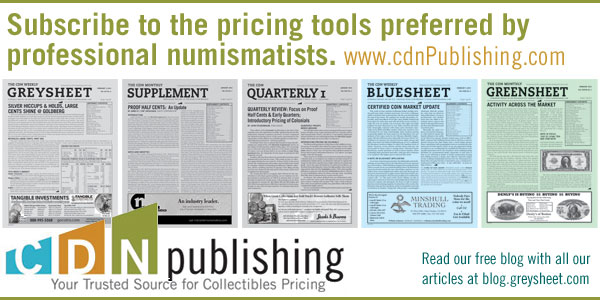
COLONIAL COIN FORGER THOMAS WYATT LETTERS OFFERED
TO BE OFFERED AT ANA CONVENTION BY KOLBE & FANNING:
SIX 1856 LETTERS BY LEGENDARY COLONIAL COIN FORGER THOMAS WYATT
Kolbe & Fanning Numismatic Booksellers are proud to announce that they will be displaying for sale at this week’s American Numismatic Association World’s Fair of Money an exceptionally important group of six handwritten letters by the notorious forger Thomas Wyatt.
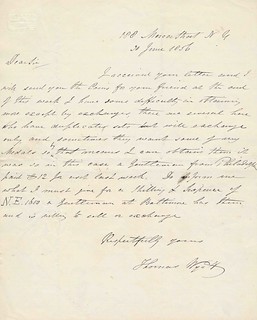 The letters, all of which pertain to Wyatt’s creation of struck copies of early American silver coins and related fantasy pieces, were written between June and August 1856. The letters illuminate Wyatt’s methods of salesmanship and demonstrate the degree to which he was willing to falsify the provenances of his “coins.” Most importantly, perhaps, are his adamant and firm statements denying that his offerings were counterfeit or otherwise fraudulent.
The letters, all of which pertain to Wyatt’s creation of struck copies of early American silver coins and related fantasy pieces, were written between June and August 1856. The letters illuminate Wyatt’s methods of salesmanship and demonstrate the degree to which he was willing to falsify the provenances of his “coins.” Most importantly, perhaps, are his adamant and firm statements denying that his offerings were counterfeit or otherwise fraudulent.
The group of letters begins with a 20 June 1856 missive asking the recipient to “inform me what I must give for a shilling & sixpence of N.E. 1650 a gentleman at Baltimore has them and is willing to sell or exchange.” A letter dated 5 July mentions that Wyatt’s unnamed source “has got the coin of the ‘Good Samaritan coined in Massachusetts,’” and asks about it. This famous fantasy piece is discussed repeatedly in the following letters. A remarkable letter dated 14 July states that “As soon as I receive the Good Samaritan piece I will enclose it to you with their price and you can do as you please about keeping it.” It also claims that “a widow lady of Chambersburg has 6 of the pine tree money pennies in a collection belonging to her late husband a Gentleman assures me he can obtain them for me she wishes to sell the collection I have requested to know particulars.” The letter mentions Jeremiah Colburn, the Boston numismatist who would publically condemn the pieces as counterfeit by August.
By late July, accusations are beginning to be made and Wyatt is feeling the heat. In a letter dated 28 July, he states, “As to the Pine Tree Money being Counterfeit I believe no such thing.” Referring to the imaginary “Chelsea Hoard” from which his trove of these pieces allegedly derived, Wyatt writes, “I saw & examined the bottle &c myself with many others and they all pronounced them genuine, many of them were stuck together in a hard lump by a substance resembling pitch some of it now remains on mine, and the antique shape of the bottle was unlike any thing I ever saw before.” He further claims that the N.E. coinage he offered came from the collection of Robert Gilmore.
On 7 August, Wyatt writes, “I have not received the Good Samaritan till this morning’s mail and I enclose it for your approval.” He asks for $7 for the coin, claiming that he will only be breaking even by such a transaction. He notes that “Mr Colburn requested as soon as I received it I would send it to him,” but Wyatt demurs. He alludes to further treasures to come from the collection at Chambersburg, including “2 Lord Baltimore shillings as good as new.” By the 12th of August, Wyatt is in defensive mode, writing, “Whatever you may be disposed to think, I have acted justly to you in every point and that man does not live that can accuse me of the reverse without slander & falsehood but there is a clique here that what they cannot obtain by fair means they will by defamation and trickery.” He adds that “you are quite mistaken about the coins being spurious metal, we tried them here in Nitric Acid and they were pronounced good silver.”
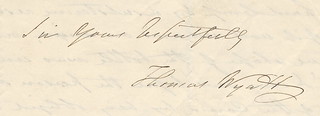
All six letters are clearly signed by Wyatt and are in near fine condition. This extraordinary archive of material pertaining to one of the more audacious and famous numismatic frauds of the nineteenth century will be the highlight of Kolbe & Fanning’s 2016 ANA Convention offerings. Come and see them at Booths 263 and 362 or write David Fanning at df@numislit.com for more information.
From Pete Smith, American Numismatic Biographies:
Thomas Wyatt
Resident of New York City. He struck copies of American Colonial coins. They are known to include:
New England sixpence
New England shilling
Oak Tree twopence
Oak Tree shilling
Pine Tree threepence
Pine Tree sixpence
In producing a copy of the New England shilling, he not only copied the coin, but also copied the horizontal lines of the engraving used as a source. He produced a fantasy Pine Tree penny. He also produced a copy of the "Good Samaritan" shilling, therefore, a copy of a fantasy.
To read the complete article, see:
Thomas Wyatt
(https://nnp.wustl.edu/library/PersonDetail/2073)
From The Secret of the Good Samaritan Shilling:
The Good Samaritan shilling has been a subject of mystery and active controversy for over two hundred years. The two varieties of this major rarity are attributed by some to the first mint in the American colonies and by others rejected as spurious fabrications, leaving a numismatic issue of primary importance unresolved. The facts from which a proper conclusion may be drawn have never been known, so that unsupported opinions and theories have predominated in all prior writing on the subject. Numismatic literature, including modern catalogues, have left the matter open for further research by admitting the existing uncertainty.
To read the complete monograph, see:
Numismatic Notes and Monographs, nos. 141-143
(https://nnp.wustl.edu/library/book/514315?page=172)

CHARLES DAVIS AT 2016 ANA WORLD'S FAIR OF MONEY
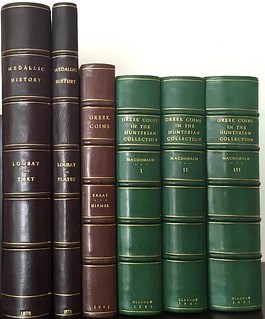 I will be attending the ANA Convention at bourse table 373. On display will be a number of works in Morocco finely bound by the Harcourt Bindery, a selection of out of print titles, as well as a number of new works largely published in England during 2016.
I will be attending the ANA Convention at bourse table 373. On display will be a number of works in Morocco finely bound by the Harcourt Bindery, a selection of out of print titles, as well as a number of new works largely published in England during 2016.
We will also have a small supply of Neil Musante's anticipated two-volume Medallic Washington. Neil and I look forward to an eventful convention.
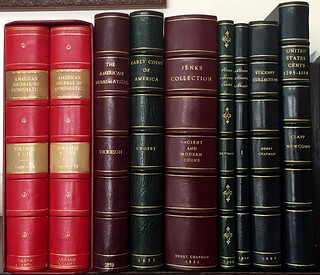
Charles Davis
P.O. Box 1
Wenham, MA 01984
Tel: (978) 468 2933
Fax: (978) 468 7893
Early American Coppers 142
American Numismatic Association 60027
NEW BOOK: MEDALLIC WASHINGTON
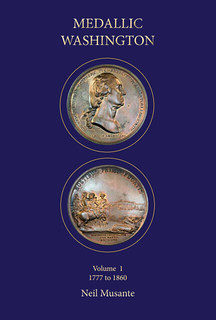 I am happy to announce that Medallic Washington is being published this month by Spink. The two volume work is a complete revision of William Spohn Baker’s Medallic Portraits of Washington. Each volume is roughly 450 pages with each medal illustrated with color photographs.
I am happy to announce that Medallic Washington is being published this month by Spink. The two volume work is a complete revision of William Spohn Baker’s Medallic Portraits of Washington. Each volume is roughly 450 pages with each medal illustrated with color photographs.
In the course of preparing these volumes, I have had the opportunity to photograph the Washington medals in the Appleton collection at the Massachusetts Historical Society, the Baker collection at the Pennsylvania Historical Society, the Snowden collection at the Smithsonian Institute, the gold Washington Before Boston medal at the Boston Public Library as well as a number of significant private collections.
Photography has also been provided by the American Numismatic Society, Yale University, Stack’s-Bowers and Heritage. A separate price guide supplement is in the works and will be available by the time the books are ready for shipment on or about September 1.
The work will be distributed by Spink in the UK and Charles Davis and the author in the U.S. The price of the two volumes with supplement is $165.00 with $10.00 for shipping. We anticipate having a limited number of advance copies at the ANA World’s Fair of Money in Anaheim at Charlie Davis’ table. Below are two sample pages.
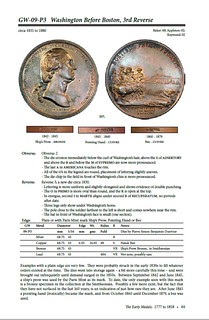
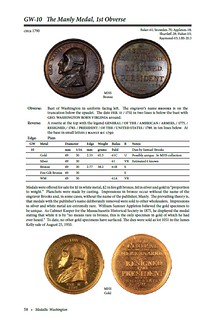
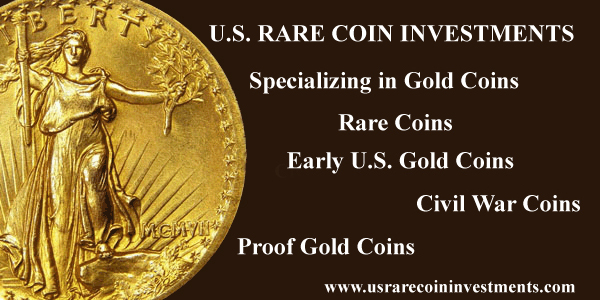
NEW BOOK: ARMENIAN COINAGE IN THE CLASSICAL PERIOD
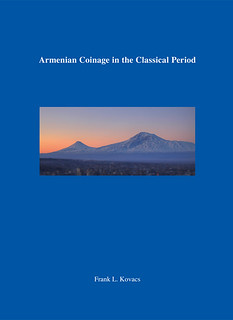 Classical Numismatic Group, Inc. of Lancaster,
Pennsylvania, and London, England is pleased to announce the publication
of the latest volume in their Classical Numismatic Studies series, Armenian
Coinage in the Classical Period by Frank L. Kovacs of Corte Madera,
California. This new volume is available by visiting the firm’s website
cngcoins.com, and clicking on the “New Book Titles” tab in The Coin Shop
section (http://cngcoins.com/Coin.aspx?CoinID=316022).
Classical Numismatic Group, Inc. of Lancaster,
Pennsylvania, and London, England is pleased to announce the publication
of the latest volume in their Classical Numismatic Studies series, Armenian
Coinage in the Classical Period by Frank L. Kovacs of Corte Madera,
California. This new volume is available by visiting the firm’s website
cngcoins.com, and clicking on the “New Book Titles” tab in The Coin Shop
section (http://cngcoins.com/Coin.aspx?CoinID=316022).
Kovacs, Frank L., Armenian Coinage in the Classical Period [Classical Numismatic Studies No. 10]. 2016. Hardbound with dust jacket. 142 total pp., consisting of 25 pages of introductory material, 57 pages of coin catalog listings, and 34 plates of photographed coins. (GR356) $85
The need for a revised and updated reference for Armenian coins of the classical period has been evident for many years. Publication has lagged, and with it, the discovery of numerous previously unknown coins while long-standing misattributions have hampered the best efforts of researchers in the field of Armenian numismatics. Armenian Coinage in the Classical Period attempts to address these problems and to present the ancient coins of Armenia as reliable source documents.
Building on the earlier work of Armenian numismatists Bedoukian, Nercessian, and Mousheghian and Depeyrot, Armenian Coinage in the Classical Period begins with the earliest known issues of Samos, after circa 275 BC, through the reign of Tiridates II, to circa AD 252, and includes all territories ruled by Armenian monarchs, or by any king or client king who ruled any territory called “Armenia.” Armenian coins issued under Seleucid, Parthian, or Roman domination are listed, as well as contemporaneous pseudo-autonomous issues. This latter category needs much additional study and the few entries herein make no pretense to completeness.
Although conquered and briefly held by Tigranes the Great, the coinage of the Kingdom of Cappadocia is not included here. Its coins have been extensively discussed and catalogued most recently by A. Simonetta (CCKR). On several occasions Cappadocian kings controlled parts of Armenia; these incidents are mentioned in the text, and examples of their Cappadocian coins are provided in Appendix B.
The specific improvements to the corpus offered in Armenian Coinage in the Classical Period include the attribution or re-attribution of coins to kings and queens to whom no coins were previously assigned, the identification of new dating eras, the identification of new mints, and the removal of non-Armenian coins, fakes, and fantasies from the corpus. While some re-attributions and identifications are conjectural, and will, no doubt, be modified as newly discovered examples dictate, it is hoped that Armenian Coinage in the Classical Period will represent a substantial advance in presenting the basic, original source documents of an important eastern kingdom of the classical period, and will allow historians to better reconstruct the historical record.
Armenian Coinage in the Classical Period will also be available at the bourse table of numismatic bookseller Charles Davis at the annual convention of the American Numismatic Association, held this year from August 9-13 at the Anaheim Convention Center, Anaheim, California.
The Armenian Numismatic Society will also be conducting a meeting at the
annual ANA convention where noted Armenian numismatic scholar Y.T.
Nercessian will be honored, and Frank Kovacs’ new book will have its
formal debut. The Armenian Numismatic Society meeting will be held on
Thursday, August 11, 2016, in the Capistra AB Room of the Anaheim
Convention Center from 1-4 pm. Mr. Nercessian will be recognized with the
first ever Lifetime Achievement Award bestowed by the Armenian
Numismatic Society. In addition, a dinner will be held later that evening in
honor of Mr. Nercessian. To RSVP for the dinner, or to leave a
congratulatory message for Y.T. Nercessian, please visit
www.anasociety.org/a>.
LEFT: Frank L. Kovacs, author of Armenian Coinage in the Classical Period
RIGHT: Mr. Y.T. Nercessian, honoree of the Armenian Numismatic Society at their
meeting to be held at the annual convention of the American Numismatic
Association in Anaheim, California on Thursday, August 11th, from 1-4 pm.
For more information, or to order, see:
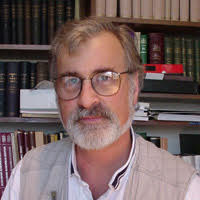
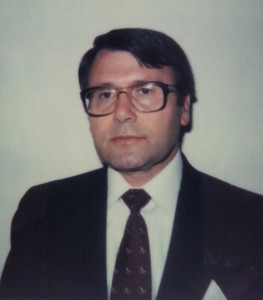
Just Published – An Important New Work on Armenian Coinage
(http://cngcoins.com/Coin.aspx?CoinID=316022)
NEW BOOK: 4TH SIMONE ASSEMANI SYMPOSIUM ON ISLAMIC COINS
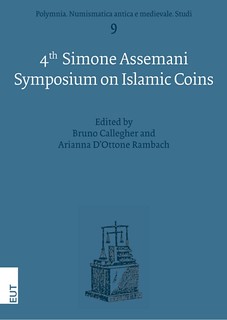 The 4th Simone Assemani Symposium on Islamic Coins
The 4th Simone Assemani Symposium on Islamic Coins
The fourth edition of the Assemani Symposium (Trieste, 25-27 September 2014) focused on the history of studies on Islamic numismatics and welcomed contributions dedicated to other topics related to Oriental numismatics in the broadest sense. The Proceedings gather together 14 papers encompassing archive documents, coins from Syria to China – passing through Central Asia – as well as glass jetons from Sicilian collections, and Arabic and Georgian seals. An ample section is devoted to Simone Assemani’s unpublished correspondence and a special attention is also given to the history of collections of Arabic coins in Italy and abroad. The volume offers a wide perspective on Numismatic research on Oriental materials and its contents will be of interest for every scholar interested in Numismatics.
CONTENTS / SOMMARIO
Callegher Bruno Per Giulio Bernardi
Pontani Anna Simone Assemani da Vienna a Trieste
D’Ottone Rambach Arianna Arabic Seals and Scripts Simone Assemani Through his Unpublished Correspondence
Callegher Bruno
Simone Assemani nella polemica Schiepati-Castiglioni (1818-1820)
Ilisch Lutz
The Leipzig Numismatic Contest of 1752 - An Incentive From the Imperial Coin Collection to Reestabilish the Ability to Attribute Arabic Coins
Atef Mansour M. Ramadan
Rethinking Lavoix's Attribution of the Dinar dated 210 AH/AD 825-826
Naymark Aleksandr
Coin Collecting in Colonial Turkestan (From Russian Conquest to the end of the 19th Century)
De Luca Maria Amalia
Il medagliere islamico dell'ex museo nazionale di Palermo e la sua collezione inedita di gettoni di vetro
Paghava Irakli
Prince Teimouraz and his Essays on Georgian Sphragistics and Numismatic History (at the Dawn of national Georgian Numismatic Scholarship)
Nastich Vladimir N.
Islamic Numismatics in Russian Turkestan (Imperial period, c. 1867-1917)
Callegari Marco
Alle origini della bibliografia sulla numismatica islamica
D'Ottone Rambach Arianna
L'affare Stanzani. Documenti inediti degli archivi romani
Gariboldi Andrea
Le monete di Turgar (738-750), ultimo re di Samarcanda
Atef Mansour M. Ramadan
A new reading for the Abbasid dinar in the name of caliph Al-Mu tamid Ala Allah (AH 256-279) minted in Al-Ma Suq 271 AH
Kovalev Roman K.
Production of Dirhams at the Mint of Damascus (Dimashq) in the First Four Centuries of Islam and the Question of Near Eastern Metallic Zones
Bruno Callegher: His scientific interests can be defined with in two major research ambits, one relating to Roman coin finds in North-Eastern Italy, the other regarding Byzantine coinage. He has been Keeper at the ‘Museo Bottacin’ in Padua and since 2006 associate professor of Numismatics at the University of Trieste.
Arianna D’Ottone Rambach is Associate Professor of Arabic Language and Literature at the Institute of Oriental Studies, Sapienza-University of Rome, and Junior Research Fellow at Sapienza School for Advanced Studies (SSAS). Her numismatic research is focused on Italian collections of Arabic coins, on the Rasulid coinage (Yemen) and on Arabic glass jetons.
For more information, or to download, see:
The 4th Simone Assemani Symposium on Islamic Coins : [16]
(www.openstarts.units.it/dspace/handle/10077/11845)
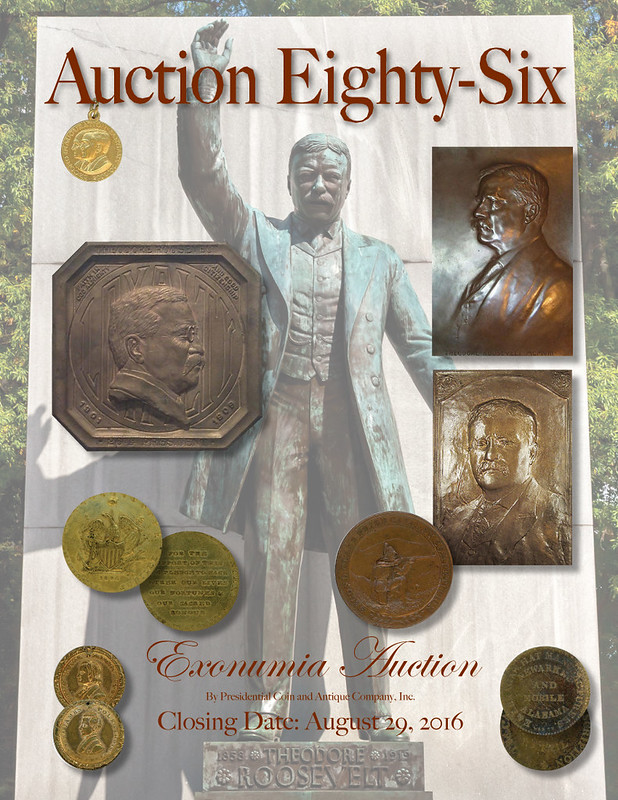
NEW PERIODICAL: UNAN NUMISMáTICA
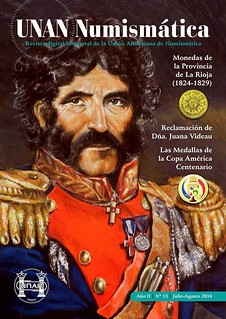 I want to inform your readers about the publication of the new digital magazine "UNAN Numismática", published by the Unión Americana de Numismática (American Numismatic Union).
I want to inform your readers about the publication of the new digital magazine "UNAN Numismática", published by the Unión Americana de Numismática (American Numismatic Union).
It has two main articles written by the argentinean numismatist Mariano Cohen (about the coins of "La Rioja" between 1824 and 1829) and the uruguayan numismatist Hugo Mancebo Decaux (about Paul Videau, a french mechanic connected to the first Montevideo Mint).
Also, there is an interview with the chilean artist Pedro Urzúa, medals engraver of "Copa América Centennial 2016".
It comes complete with informative articles on recent coinages in Argentina, Perú and Uruguay, plus numismatic events in Bolivia and Panama. The magazine can be downloaded at: www.monedasuruguay.com/bib/bib/unan/unan013.pdf
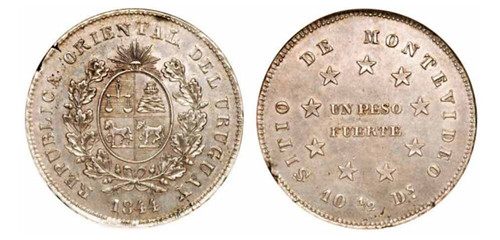
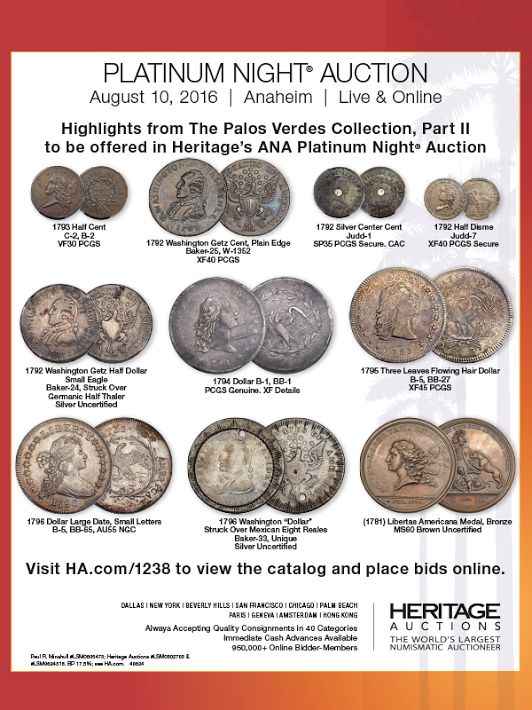
BOOK REVIEW: THE GOLD INDIANS OF BELA LYON PRATT
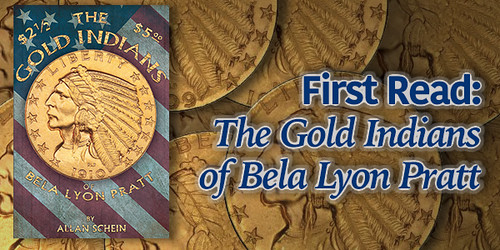
Upon release, the two incuse coins were reviled by collectors. Bela Lyon Pratt’s Indian chief was called emaciated. The reverse – borrowed from Saint-Gaudens’ $10 design – was ridiculed. For years, the coins languished under this prejudice.
But time, and the perspective it allows, has a way of reframing the narrative and it is this author’s opinion that the $2.50 and $5.00 Indian designs are an elevation of American coin art, not a diminishment of it.
Enter author Allan Schein’s new book, The Gold Indians of Bela Lyon Pratt (2016). Schein shares my love for the design and offers an imminently readable history and collector overview of the series. In depth and feel, the volume shows significant growth on the part of the author. While his Un Caballito Peso (2014) broke new ground in terms of an English-language treatment of the popular Mexican coin, virtually every U.S. coin series has seen at least one or two standard reference treatments.
Before this work, collectors had Garrett and Guth, Fuljenz and Winter, and of course the seminal 1970s treatment by Akers for history and date-by-date analysis.
None of these works cover the breadth or depth of the ground covered here. And oh, what ground it is.
“This biography of Pratt,” Schein writes, “is probably the most extensive ever published, yet it includes only a small portion of the materials that were available to me while researching his life.”
What is included is insightful, in that it reveals to those readers who more familiar with Pratt’s numismatic work that he was also a great talent in the classical style. Schein includes many examples of the young artist’s work, such as his earliest collaborations with Augustus Saint-Gaudens and student work from his time at the École des Beaux-Arts in Paris. Pratt’s Library of Congress medallions are majestic, as was his “Winged Victory” gun turret ornament that adorned the 13” forward guns of USS Massachusetts.
But the book’s big reveal comes from Schein’s original research into Pratt’s personal letters and effects.
For instance, the back-and-forth between Pratt and Dr. William Sturgis Bigelow, a renowned collector of Japanese Art and a close friend of President Theodore Roosevelt, show the latter’s influence in giving Pratt his big national commission. Bigelow was such a champion of Pratt’s work that his name was, for a time, attached to the coins, which were called the Bigelow-Pratt coins.
Schein’s turn through the Pratt archives provided a number of insights into the design process of the coins. They also revealed much about Pratt, a modest man, whose modest success limited to the financial gains from his art and the quality of his work.
Revealed, too, are the Indian gold coin galvanos, master hubs and dies, along with photographs of Sioux Indian Chief Hollow Horn Bear, the model for Pratt’s design.
The Gold Indians of Bela Lyon Pratt
By Allan Schein
416 PP. Self Published. Color, Softcover. $39.95 MSRP (A hardback edition is forthcoming).
I've always taken a shine to these coins myself. The unusual incuse design makes them a standout in the U.S. series. It's easy to see why they were criticized in the beginning - they were so different than any coin before them that people didn't quite know what to make of them. But I concur with Allan and Charles - these are wonderful designs.
I excerpted the parts of the review concerning Pratt and his life and art, since these are the aspects most students of numismatic history are concerned about. But the book's extensive year-by-year discussions of mintage, rarity, grades and prices will be the meat for most collectors and investors.
So there's something for everyone here, and I concur with Charles' "Highly Recommended" rating. As noted last week, Allan will have books for sale at the American Numismatic Association World's Fair of Money in Anaheim, and anyone interested can visit him at the Central States Numismatic Society table. After the 15th it will be available on eBay, and through Wizard Coin Supply.
-Editor
To read the complete article, see:
First Read: The Gold Indians of Bela Lyon Pratt by Allan Schein
(www.coinweek.com/education/numismatic-books/first-read/first-read-gold-indians-bela-lyon-pratt-allan-schein/)
To read the earlier E-Sylum article, see:
NEW BOOK: THE GOLD INDIANS OF BELA LYON PRATT
(www.coinbooks.org/esylum_v19n31a07.html)

BOOK REVIEW: OLYMPIC COINS
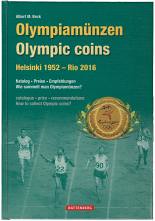 Albert M. Beck, Olympiamünzen - Olympic Coins. Helsinki 1952 - Rio 2016. Battenberg Verlag, Regenstauf 2016. 192 pages with color illustrations throughout. Paperback. Thread stitching. 17 x 24cm. ISBN 978-3-86646-127-7. 29.90 euros.
Albert M. Beck, Olympiamünzen - Olympic Coins. Helsinki 1952 - Rio 2016. Battenberg Verlag, Regenstauf 2016. 192 pages with color illustrations throughout. Paperback. Thread stitching. 17 x 24cm. ISBN 978-3-86646-127-7. 29.90 euros.
When, on August 5, 2016 the Olympic Games will commence in Rio, Olympia will also feature very prominently on all TV shopping channels. Especially popular are the Olympic coins – sometimes presented with the incident remark that they can only increase in value. A look at their price developments, however, proves this statement to be certainly not valid.
Since 1951 Olympic Coins have been issued. While they were minted individually as commemorative circulation coins at first, Germany took advantage of its large issue, comprising six different types in two qualities and made by four mints, to have the citizens partly pre-finance the games through the seigniorage.
With the coin collector boom Olympic Coins became a promising business model which came to an abrupt end as a result of the silver price plummeting after the Moscow Olympics. Those who had bought the elaborate blue velvet boxes could consider themselves lucky if, when trying to re-sell them four years later, they obtained at least a fraction of the former purchase price. Silver had fallen by more than 90% – and there was no numismatic value to the strikings because the mintage had by far exceeded the number of potential collectors.
It took quite some time for the market of Olympic Coins to recover. But, it did recover, thanks to a reasonable issue policy in the 80s and 90s. Who wants to learn how the Royal Canadian Mint and the British Royal Mint sounded the death knell for the Olympic Coins as a collector field afterwards, should buy the catalog of Olympic Coins by Albert M. Beck. With this book, he not only submits a very beautiful and lavishly illustrated compendium of Olympic Coins up to and including 2016 but also presents a critical review of a failed issue policy.
Albert M. Beck is predestined to write this catalog. For decades, he has been a member of the IOC’s commission that decided upon collector issues. In this capacity, he was able to closely observe the coin program of many Olympiads from their initial stages to their realization. And so the catalog he offers to the collector is a very special book.
It contains a short but highly informative introduction, followed by a comprehensive catalog with illustrations throughout. Every coin type is accompanied by a current market value. Entry in this catalog only found those coins that were issued by the Games’ host country. Additionally, the catalog includes a section of commemorative coins that were minted on the occasion of the 100th anniversary of the modern Olympic Games. An itemization according to the numbers of issued coin types rounds out the catalog.
To anybody interested in modern Olympic Coins, this work is a standard reference that deserves a place in every library. And because of its introduction, the book ought to be given to every new member of a mint’s marketing committee. Perhaps this can make outsiders realize, too, that coins are not at all a product just like any other.
To read the complete article, see:
Catalog of Olympic Coins by Albert M. Beck
(www.coinsweekly.com/en/News/Catalog-of-Olympic-Coins-by-Albert-M-Beck/4?&id=4228)
For a free subscription to CoinsWeekly, see:
http://www.coinsweekly.com/en/Subscribe-to-CoinsWeekly-Newsletter/37
In every sense, the modern Olympic Games are worthy of not just one but many commemorative coin series. The number of sports. The level of competition. The sheer scale of the spectacle. The idealism.
The matter of how many has sometimes been a point of contention among legislators, numismatists, and the everyday coin collector.
The expansive collection of United States coins honoring the various Olympic events–the Summer and Winter Games, plus the Paralympics and Special Olympics–is nearly beyond the financial reach of the individual numismatist. Not even counting the myriad sets that have been spawned by numerous Olympic commemorative coin programs since the 1980s, there have been some 60 different Olympiad-related coin issues (including various finishes) released by the U.S. Mint since 1983. That figure rivals the collective total of Olympic medals (61) won by some of America’s greatest athletes.
To read the complete article, see:
Modern US Coins – Olympics a Timely Theme for Coin Collectors
(www.coinweek.com/coins/commemoratives-coin-guide/modern-us-coins-olympics-collectors/)
THE BOOK BAZARRE
THE FRANK L. KOVACS NUMISMATIC LIBRARY
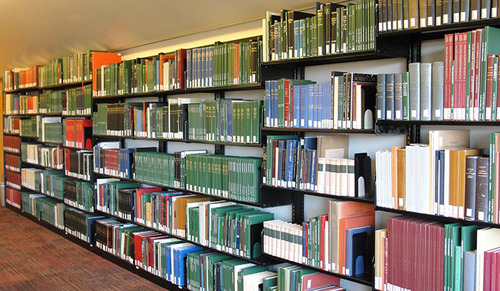
The Frank L. Kovacs Numismatic Library, undoubtedly one of the largest and most complete reference collections on ancient numismatics situated on the West coast of the U.S., is now housed at the Stanford Libraries and was immediately put to use by students and a visiting professor throughout spring-quarter seminars.
An important reference library and treasured Bay Area resource was at risk of being dismantled until six local numismatists offered to purchase the entire collection for Stanford in support of ongoing research on ancient economies and coinage.
Comprising more than 2,700 catalog records and occupying 325 linear feet of shelving in the Raubitschek Room in Cecil H. Green Library, the collection has been named the Frank L. Kovacs Numismatic Library.
This finally puts the Raubitschek Room in the position to provide coverage of all three major types of primary documentary evidence – coins, inscriptions, and papyri – for the ancient world,” said Walter Scheidel, the Dickason Professor in the Humanities.
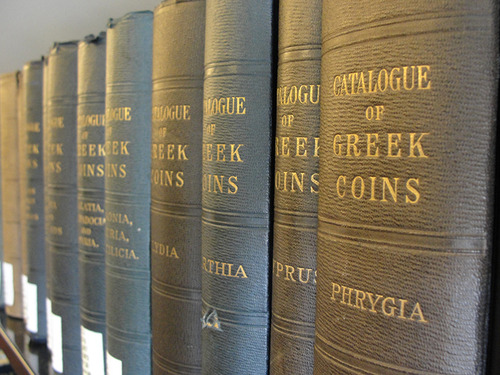
According to Scheidel, who was Chair of Classics at the time of the acquisition, “Access to this collection is invaluable in establishing the study of ancient numismatics as a critical component of our Classics program.”
Right Place, Right Time
The benefactors who in March 2015 philanthropically preserved the integrity of the collection and made it available for scholarly use included Frank Kovacs, a leading Bay Area professional numismatist who assembled and consulted the library throughout his career; his wife Renee Kovacs, a scholar who advises the Cuneiform Digital Library Initiative at UCLA and other institutions; John Jencek, professional numismatist whose office in San Mateo housed the library until his move to Prague, Czech Republic; Mary Lannin, president of the San Francisco Ancient Numismatic Society and chair of the Citizens Coinage Advisory Committee in Washington, D.C.; Richard Beleson, Stanford alumnus and member of the Board of Trustees of the American Numismatic Society; and Lawrence Schwimmer, likewise Stanford alumnus and American Numismatic Society board member.
“The Kovacs Library has dramatically broadened Stanford’s collections,” said University Librarian Michael Keller. “The overlap with the Libraries’ pre-existing holdings was less than 30 percent, making it a highly valued addition.”
In merely months after the collection’s arrival, Dr. Bernhard Woytek, head of the division Documenta Antiqua, a research center for numismatics, epigraphy and papyrology at the Institute for the Study of Ancient Culture at the Austrian Academy of Sciences, took up an appointment as visiting associate professor of Classics and offered two numismatic courses.
“In numismatics, as in all other disciplines dealing with documentary sources of the ancient world, like epigraphy and papyrology, it is essential to work hands-on with the primary material,” Dr. Woytek stated. Upon this premise were founded an undergraduate course, Describing and Identifying Ancient Coins, and a graduate proseminar, Ancient Numismatics. Students used volumes from the Kovacs Library alongside coins in Stanford’s collections.
In May, members of the numismatic community, students, faculty, and library donors attended the opening of the Kovacs Library. Dr. Woytek kindly delivered the keynote lecture titled “Numismatics and the Mind of Man: The Study of Ancient Coins from the Renaissance to the 21st Century.
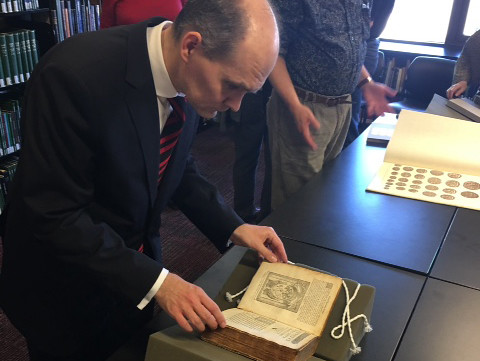
Dr. Woytek examining a 1567 edition of works by Guillaume Du Choul
“Numismatics plays a vital role in broader studies of economics and many other interdisciplinary inquiries. We look forward to continuing to build the Kovacs Library for scholarly exploration,” said Keller, who before coming to Stanford in 1993 managed the numismatic collections at Yale Libraries as associate university librarian and director of collection development.
Any expressions of support and encouragement from the numismatic community would be greatly appreciated. To discuss opportunities, please call the Library Development Office at 650-723-3866.
Congratulations to the University, and thanks to the donors who made it possible. Thanks also to CoinsWeekly, where I first learned of this article. -Editor
To read the complete Stanford article, see:
A Transformative Numismatic Donation
(http://hosted-p0.vresp.com/260487/bbdd2959cf/ARCHIVE)
To read the complete CoinsWeekly article, see:
A Transformative Numismatic Donation
(www.coinsweekly.com/en/News/A-Transformative-Numismatic-Donation/4?&id=4226)
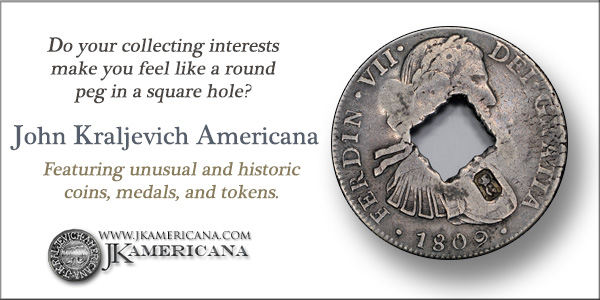
ANA CLUB PUBLICATIONS AWARD WINNERS
Each year since 1971, the American Numismatic Association has recognized the best journals and newsletters produced by ANA-member organizations. Entries in this year’s Outstanding Club Publications competition were judged in four categories: local, regional, specialty and electronic. Winners will be recognized Saturday, Aug. 13, during the ANA District Representative meeting at the Anaheim World’s Fair of Money.
Local Clubs First—The Cincinnati Numismatist, Cincinnati Numismatic Association (David Heinrich, editor) Second—Your Two Cents Worth, Tyler Coin Club (Richard Laster, editor) Third—The Omaha Coin Club News, Omaha Coin Club (Mitch Ernst, editor)
Regional Clubs
- First—TNA News, Texas Numismatic Association (Ron Kersey, editor)
- Second—The MichMatist, Michigan State Numismatic Society (Michael C. Strub, editor)
- Third—N.O.W. News, Numismatists of Wisconsin (Jeff Reichenberger, editor)
Specialty Clubs
- First—Casino Collectible News, The Casino Chip and Gaming Token Collectors Club (Steve Miller and Robb McPherson, editors)
- Second—The Medal Collectors Advisory, Medal Collectors of America (John W. Adams, editor)
- Third—ErrorScope, The Combined Organizations of Numismatic Error Collectors of America (Jeff Ylitalo, editor)
Electronic Newsletters
- First—PANeNews, Pennsylvania Association of Numismatists (Patrick McBride, editor)
- Second—Madison County Coin Club Enewsletter, Madison County Coin Club (Harold Fears, editor)
- Third—Tucson Coin Club Newsletter, Tucson Coin Club (Jane Stubbs, editor)

NEWMAN PORTAL DIGITIZES BARBER COIN JOURNAL
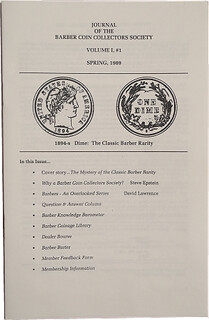 It is a pleasure to announce that the Newman
Numismatic Portal recently completed
scanning the first 26 Volumes of the Journal
of the Barber Coin Collectors’ Society,
spanning the years 1989 to 2015. From the
beginning of the Barber Coin Collectors’
Society (BCCS) and the inaugural Journal
(just 3 stapled pages of 8-½ x 11 paper),
through to the new format introduced in 2015,
104 BCCS Journals are available via the
Newman Portal.
It is a pleasure to announce that the Newman
Numismatic Portal recently completed
scanning the first 26 Volumes of the Journal
of the Barber Coin Collectors’ Society,
spanning the years 1989 to 2015. From the
beginning of the Barber Coin Collectors’
Society (BCCS) and the inaugural Journal
(just 3 stapled pages of 8-½ x 11 paper),
through to the new format introduced in 2015,
104 BCCS Journals are available via the
Newman Portal.
The BCCS Journal contains a wealth of
articles on each of the Barber series, including
research on hub changes, census studies and
rarity surveys, new variety discoveries (such
as the recent 1906-D/O dime discovery),
collecting experiences, and much more.
 Any questions about the BCCS can be
directed to John Frost, President and Journal
Editor at bccs@barbercoins.org.
The link to the back issues of the Journal on
the Newman Portal can be found at the BCCS
website,
www.barbercoins.org/Journal.
Any questions about the BCCS can be
directed to John Frost, President and Journal
Editor at bccs@barbercoins.org.
The link to the back issues of the Journal on
the Newman Portal can be found at the BCCS
website,
www.barbercoins.org/Journal.
To view the issues on the Newman Portal, see:
https://nnp.wustl.edu/library/publisherdetail/511173
The BCCS gratefully acknowledges the generous support of the Newman Numismatic Portal in digitizing this material and making it freely available.
THE NEWMAN PORTAL AT 2016 ANA WORLD'S FAIR OF MONEY
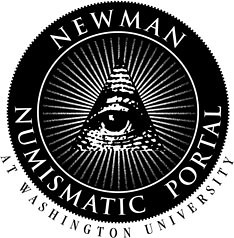 The Newman Portal will be at the ANA convention in Anaheim, CA next week. Stop by and visit, or attend one of our presentations. Our schedule is:
The Newman Portal will be at the ANA convention in Anaheim, CA next week. Stop by and visit, or attend one of our presentations. Our schedule is:
Wednesday, August 10: table #261, all day
Friday, August 12: The Newman Portal will be presenting at the NBS general meeting (11:30am), Huntington conference room.
Saturday, August 13: The Newman Portal will be presenting at the ANA Money Talks forum (10am), Avila conference room.
See you in Anaheim!
Len Augsburger
Project Coordinator, Newman Numismatic Portal
Washington University in St. Louis
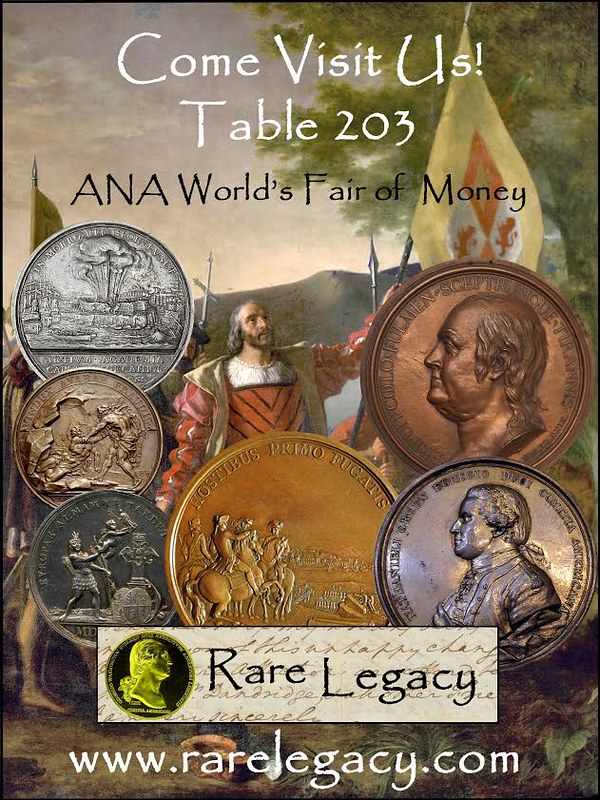
RESEARCHING OBSOLETE MARYLAND BANKNOTES
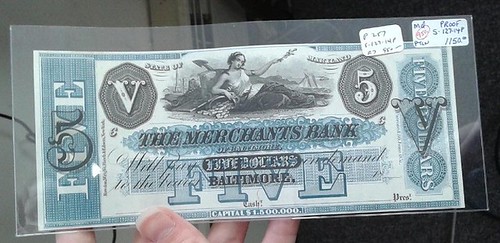
My latest adventure in numismatics landed me in Baltimore, Maryland, week before last to visit the headquarters of Coast to Coast Coins. There I met with Ken Pines, who generously agreed to allow me to come and scan his collection of Maryland obsolete paper money for inclusion in the next Whitman Encyclopedia of Obsolete Paper Money. Hitting shelves this holiday season, volume 8 will encompass the states of Delaware, Maryland, and Virginia, as well as the District of Columbia. The region is obviously one that is rich with history, both numismatically and otherwise, and so I was greatly looking forward to seeing such a large collection of paper money in person.
The history of numismatics is what draws my interest most, and the vignettes found on obsolete paper money are saturated with it. You can learn much about where a note was issued purely from the images found on the note itself—agriculture, shipbuilding, milkmaids, gods and goddesses, mills, bank buildings, animals, industry. Even details such as where a note was payable, or in what funds, add to the intrigue of this particular bank-note-issuing era.
And I was certainly not disappointed. The experience was a delight—Ken and his staff at Coast to Coast were hospitable and friendly, and as I arrived with scanner and laptop in tow I was met with stacks of paper money albums, all ready to be documented.
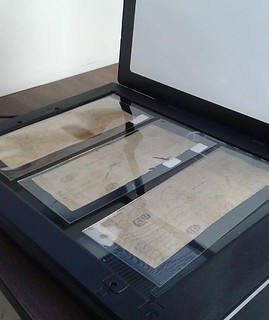 Luckily Ken’s collection was well-organized, allowing me to get through 1,200+ notes during my time there. The only thing I was unable to scan were the bigger, four-note uncut sheets, as my portable scanner was a tad too small to manage them.
Luckily Ken’s collection was well-organized, allowing me to get through 1,200+ notes during my time there. The only thing I was unable to scan were the bigger, four-note uncut sheets, as my portable scanner was a tad too small to manage them.
I was able to scan most of the notes in their plastic holders, but a few had to come out to capture the full image. And while the reverence with which I handled them was due mostly to their age and fragility, there was also a sense of muted wonder to it, contemplating who else had held this piece of paper in centuries past—from the 19th and 20th centuries, through to the 21st. Printers taking the paper off the press…bankers signing and cutting the notes from sheets…merchants and everyday people passing the bills in commerce, stuffing them in their wallets or under pillows…numismatists through the years, admiring the artistry. And now me, archiving the images as a tiny slice of time.
It’s not every day you get to archive a collection of historical treasures. I hope I have the opportunity to do so again in the future!
To read the complete article, see:
Archiving Obsolete Bank Notes in Baltimore
(http://news.coinupdate.com/archiving-obsolete-bank-notes-in-baltimore/)
COLONIAL COIN AND STAMP COMPANY COIN BOARDS
I want to extend my thanks to John Lupia and Ron Haller-Williams for sharing what they'd learned about A. C. Roessler. I'm always amazed at how many hobby figures who were so well known in the past can be utterly forgotten today. It demonstrates once again that The E-Sylum is the place to go for picking the brains of the best and brightest in our field.
To show how one entry can easily lead to another, David Crenshaw's correct answer for the quiz about who is looking over the shoulder of actor Victor Buono provides yet another layer to the story.
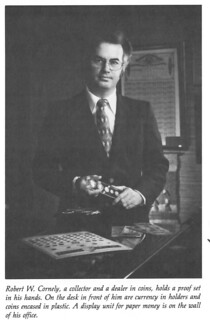 In the signed photo of Robert Cornely that David submitted is a circa 1937 coin board published by Colonial Coin and Stamp Company of New York City. This firm was owned and operated by Leiser Wolf Schnelling, a German immigrant who became a naturalized citizen in 1933 and published a reference book on United States coins that same year. While his book was little different from the many dealer-issued guides of that decade, his coin boards were another matter. These had clear plastic backings for viewing of both sides of the coins, and that luxury priced them at 35 cents, versus just 25 cents for the boards of Whitman and other publishers.
In the signed photo of Robert Cornely that David submitted is a circa 1937 coin board published by Colonial Coin and Stamp Company of New York City. This firm was owned and operated by Leiser Wolf Schnelling, a German immigrant who became a naturalized citizen in 1933 and published a reference book on United States coins that same year. While his book was little different from the many dealer-issued guides of that decade, his coin boards were another matter. These had clear plastic backings for viewing of both sides of the coins, and that luxury priced them at 35 cents, versus just 25 cents for the boards of Whitman and other publishers.
During the 1930s Colonial Coin and Stamp Company was among the biggest dealers in New York City after Wayte Raymond, rivaling Stack's and New Netherlands, both of which entered the business that same decade. Schnelling was active in the Bronx Coin Club and also was listed as a donor to the ANS, but I could find no evidence that he ever joined the ANA. Schnelling appears to have dropped out of sight during the 1940s, the last document I could find being his 1942 draft registration card. He was then too old for military service, so his date and cause of death remain unknown to me.
I'm attaching some images of the coin board that appears on Robert Cornely's desk in the book photo. One of these is a close-up of the illustrations just barely visible in the Cornerly photo.
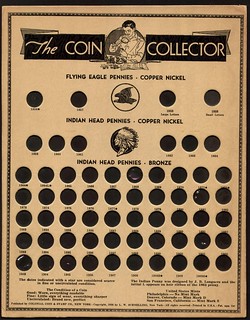
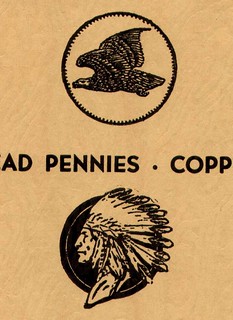
I've since found some additional information about Schnelling. He was released from military service just four months after his September 29, 1942 enlistment. No cause was stated, but at the age of 45 he was likely just too old by the standards of the time. He died August 21, 1981 in North Hollywood, California, just shy of 84. I'd still like to know what happened during that gap of nearly 40 years, but the trail went cold after his discharge. The federal census for 1950 won't be released until 2021.
To read the earlier E-Sylum articles, see:
ALBERT CHARLES ROESSLER, JR. (1883-1952)
(www.coinbooks.org/esylum_v19n31a16.html)
NOTES FROM E-SYLUM READERS: JULY 31, 2016 : Quiz Answer: Who's in This 1913 Liberty Nickel Picture?
(www.coinbooks.org/esylum_v19n31a14.html)
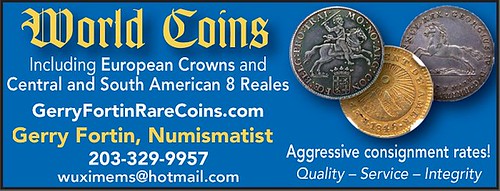
NOTES FROM E-SYLUM READERS: AUGUST 7, 2016
2016 ANA Exhibits
Paul Hybert writes:
A preliminary online guide to the Collector Exhibit Area at ANA in Anaheim is available at:
www.chicagocoinclub.org/events/2016/ana/ex/all_by_cl.html
These are the exhibits that we expect to be ready for public viewing when the bourse opens at 10am on Tuesday, August 9. Scan the list, find some that interest you, and stop by.
So-Called Dollars from the Pacific Coast Expositions
Jeff Shevlin writes:
Bill Hyder and I are about half way done with our next book, titled So-Called Dollars from the Pacific Coast Expositions. The book is going to be part story book, part catalog. We want collectors to get excited about collecting So-Called Dollars, and story books do that. There were eight expositions held on the Pacific Coast, starting with the 1894 Midwinter, the 1915 PPIE, etc. Our book is going to tell the story of those expositions, and catalog all of the So-Called Dollars struck at each.
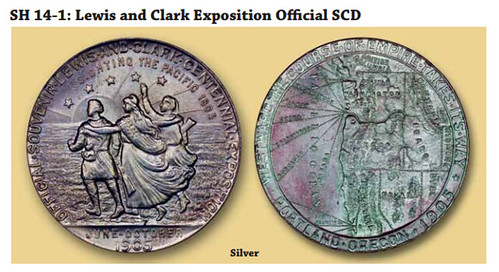
On Coins, Museums, and Collectors
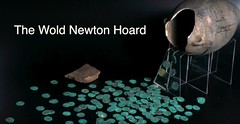 Regarding David Sundman's wish that the Yorkshire Museum would fail to raise funds to purchase a large hoard of Roman coins,
U.K. reader Anthony Portner writes:
Regarding David Sundman's wish that the Yorkshire Museum would fail to raise funds to purchase a large hoard of Roman coins,
U.K. reader Anthony Portner writes:
I could not agree more with the sentiments expressed by David Sundman. British museums should be deacquisitioning rather than acquiring coins, pictures etc of which they already have far too many to display or study.
To read the earlier E-Sylum article, see:
MUSEUM SEEKS FUNDS TO PURCHASE WOLD NEWTON HOARD
(www.coinbooks.org/esylum_v19n31a25.html)
William Woart's Notary Seal
Last week we discussed the William Woart token, an enigmatic early American piece from William Woart, Justice of the Peace.
Julia Purdy writes:
I found this recent listing on eBay for an 1809 document which has William Woart's notary seal. I would expect he had another seal for his Justice of the Peace position - which may or may not be a match to the mystery token. But I thought this may be of interest.
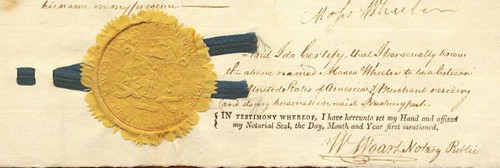
To read the complete eBay listing, see:
1809 BILL LADING FROM MOSES WHEELER NEWBURYPORT & NTRY PUBLIC DOC WILLIAM WOART
(www.ebay.com/itm/1809-BILL-LADING-FROM-MOSES-WHEELER-NEWBURYPORT-NTRY-PUBLIC-DOC-WILLIAM-WOART-/231986788502)
To read the earlier E-Sylum article, see:
THE WILLIAM WOART TOKEN
(www.coinbooks.org/esylum_v19n31a18.html)
Another Encounter With Grace Hopper
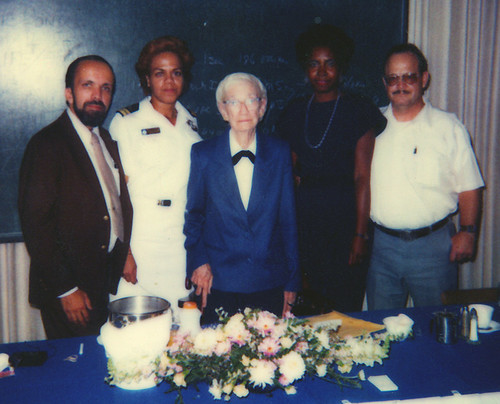
LEFT: Ken Berger; CENTER: Grace Hopper
Regarding my July 17, 2016 Numismatic Diary, Ken Berger writes:
Grace Hopper was mentioned in an earlier issue of The E-Sylum. I had the pleasure of meeting her in the mid-1980s when she gave a talk at one of the U.S. Navy installations in San Diego (I'm the one with the beard).
I specifically asked her about the coining of the word 'bug'. She told me that back in the late 1940s, one of the mainframe computers stopped working and the Command wanted to know what was wrong. She had a technician open the back of the computer and found that a moth had gotten in and caused a short with its wings contacting various vacuum tubes (remember those?). So, in her response, she wrote that there was a bug in it. She taped the moth into her log book and she told me that it was on display in the Smithsonian.
She also handed out pieces of wire that were 11.8 inches long. This length represented the distance light travels in one nanosecond. Then she told us if we wanted to know how fast light traveled in a picosecond, we should spill some pepper on our hands and pick out one grain. Grace Hopper was a very intelligent and interesting person.
To read the earlier E-Sylum article, see:
WAYNE'S NUMISMATIC DIARY: JULY 17, 2016
(www.coinbooks.org/esylum_v19n29a19.html)
On the Newman Numismatic Portal
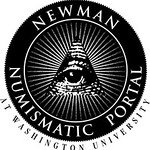 Mike Paradis writes:
Mike Paradis writes:
By the way, the Newman Numismatic Portal is fantastic. I find myself looking there every day.
To visit the Newman Numismatic Portal, see:
www.newmanportal.org
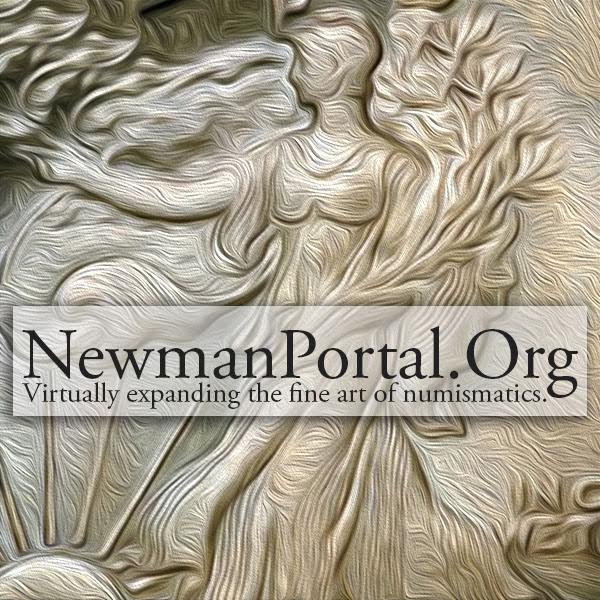
QUERY: BROWNING QUARTER PLATES INFORMATION SOUGHT
Mike Paradis writes:
I do not have an original Browning that I can compare to. Can anyone tell me if these are originals? If the original Browning's had B-2A why didn't the subsequent ones?
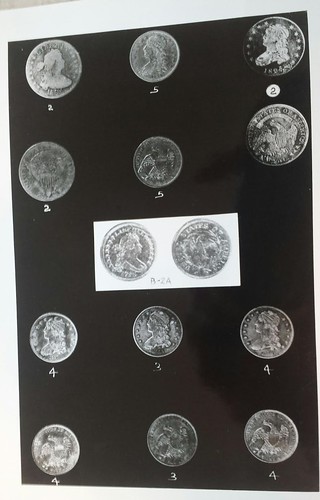 I have an old envelope the has "SET OF PLATES (8) FOR BROWNING BOOK" with 8 plates inside. I have compared the plates to the 1992 Browning & Breen book
I have an old envelope the has "SET OF PLATES (8) FOR BROWNING BOOK" with 8 plates inside. I have compared the plates to the 1992 Browning & Breen book
QUERY: REPRINTS FROM THE NUMISMATIST BEFORE 1900
I have been looking at reprints from the early Numismatist and I am thinking of writing something for The Asylum. I first want to make sure there is an interest and that I am not covering something someone else has done and if not then I want it to be as complete as possible.
Below I have listed what I can find that has been reprinted from The Numismatist prior to 1900. I gathered the information from auction sales or my own copies. I would appreciate any comments or additional information. I will continue searching auction catalogs for more reprints.
These are not necessarily "Numismatist Reprints" but are reprints from The Numismatist.
In order as they appear in The Numismatist:
- · V3 #15&16 august 1891 pages 57-59 Numismatist reprint #4 "The Association of Numismatist"
- · v3 #5&6 Apr 1891 p25-27 to v3 Sept 1891 p67 Num reprint “The Coins of Wang Mang”
- · V3 #23 & 24 December 1891 to V4 #4 April 1892 “Numismatic Headlights”
- · v3 Nov 1891 p85 to v4 Oct 1892 p57-59 Numismatist reprint 6 “The Coins of the Manchu …”
- · October 1891 to December 1892. “Numismatic Foundation Stones”
- · V6 #2 February 1893 pages 25 & 26 “From the President”
- · 1894 convention program
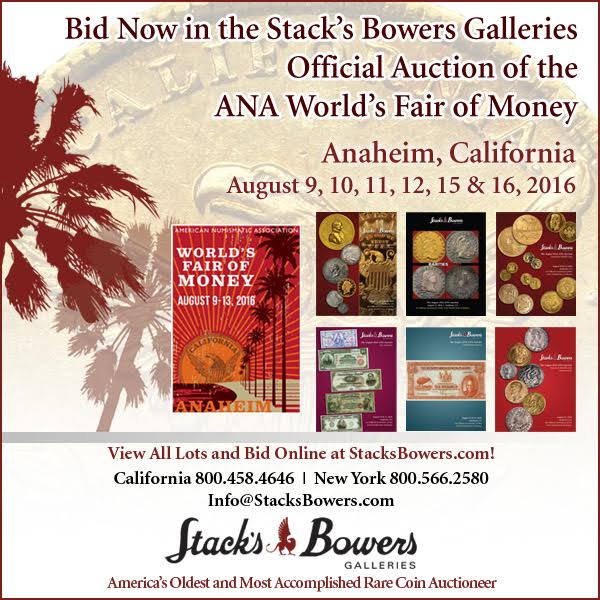
JOHN WALTER SCOTT (1845-1919)
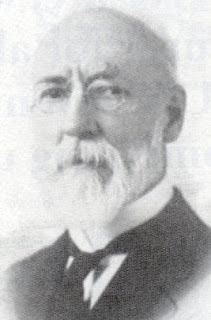 John Walter Scott (1845-1919): He is given the appellation “Father of American Philately,” he was also a prominent coin dealer.
John Walter Scott (1845-1919): He is given the appellation “Father of American Philately,” he was also a prominent coin dealer.
Scott was born in London, England on November 2, 1845. He began to collect stamps in 1860. He immigrated to America in 1863. In America he owned three companies selling stamps and coins; the second one renamed Scott Stamp & Coin Company Limited by the new owners. Consequently a discussion of the Scott Stamp & Coin Company Limited is not included in this biographical sketch since it is a separate entity apart from J. W. Scott. This is emphasized since it is a common error to conflate the two together. Hopefully this differentiation and distinction given here will contribute to clarifying the matter.
He moved to New York in 1863 and immediately opened the firm of J. W. Scott Company, Limited, selling coins and stamps, the first of three coin and stamp businesses he would establish in his career. In 1864 he closed his stamp, coin and curio business and moved to California attempting gold mining.
From June 1867 to August 1868, Scott issued fifteen monthly one-page price lists. Only four of these fifteen issues are known in any collection and no complete set is known anywhere. Of these four only August (3 copies) and September (4 copies) 1867, and February (9 copies) and April (11 copies) 1868 are known. In September 1868, he issued his first catalog, which, logically, he entitled in the Preface ”To Our Customers” as the sixteenth greatly enlarged edition: Descriptive Catalogue of American and Foreign Postage Stamps, Issued from 1840 to Date, Splendidly Illustrated with Colored Engravings And Containing the Current Value of Each Variety.
This was the first "Scott Catalogue", although Scott counted his first fifteen one-page lists and called the September 1868 issue as his "Sixteenth Edition", when his address was at 75 & 77 Nassau Street, New York. In March of 1868, he began publishing the American Journal of Philately (AJP), and helped found the New York Philatelic Society, Tiffany No. 14. He continued publishing the AJP until December 1878. He resumed this publication in 1888. Scott's coin and stamp catalogs became the most important ones in the country.
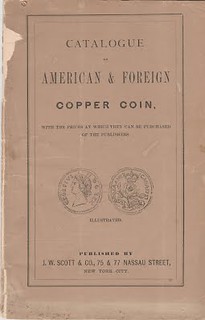
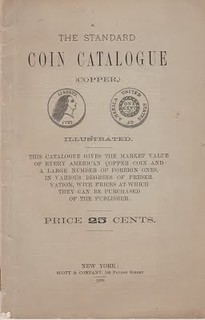
The Fall 1869 and Fall 1879 Editions of the Scott Coin Catalogue
In 1875 Scott hired Edouard Frossard to edit The Coin Collectors’ Journal, published as a monthly in blue paper wrappers. This periodical was published from December 1875 to December 1888 with the final three years under new ownership. However, Frossard only edited Volume 1 of the first year from December 1875 until December 1876. The bulk of the remaining Volumes 2-12 were edited by David Proskey, except for the final five issues of Volume 12. Lyman Haynes Low merged with J. W. Scott & Coin, in August 1885 four months prior to the December 1885 sale.
The actual number of coin auction catalogs issued under J. W. Scott from October 23-24, 1877 until December 10-12, 1883 is uncertain. Various authors have attempted to assess this area but the results show evidence that they have mixed up the J. W. Scott & Co., and the Scott Stamp and Coin Co., Ltd., as though they were all one property of John W. Scott.
In July 1879 The Coin Collectors’ Journal, published an article on the Confederate half-dollar of 1861. Scott purchased one of the four known specimens including the die pair from Ebenezer Locke Mason, Jr., who bought it from Ed Cogan in the coin auction sale of Michael Moore collection sold at Bangs on May 2nd.
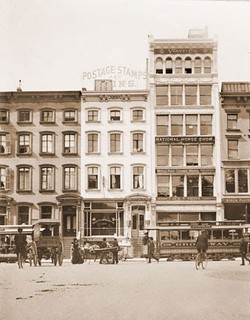
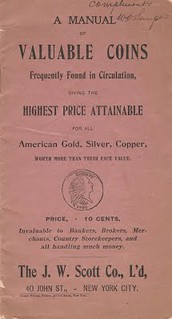
LEFT: Scott & Company, 721 Broadway, New York.
The sign atop the building reads Postage Stamps and Coins.
RIGHT: 1890 A Manual of Valuable Coins
On December 10, 1885, in order to pursue other investments, he sold the business to the Calman brothers and Henry Collin, which they renamed Scott Stamp & Coin Company. Scott retained a small interest in the company stock and continued to work as editor of the catalogs and >The American Journal of Philately until 1889, when he sold off his remaining interest in order to start a new business.
J. W. Scott Company, Limited, was his third and final company. Walter S. Scott, the eldest child of J. W. Scott worked for his father in the family business and is listed in records as a clerk.
In 1889, after nearly five years of financial struggling Scott reorganized the new J. W. Scott Company, Limited and incorporated the company and established his corporate logo. His new company published List of Prices at Which We Sell U. S. & Fractional Currency, Colonial, and Continental Bills, Coins, Stamps, Albums, etc.
In 1895 Augustus Goodyear Heaton published “A Tour Among the Coin Dealers,” in The Numismatist which read :
"In the middle of downtown business life on John Street will be found the J. W. Scott Company. It occupies a spacious lower floor with two show windows on the street, and its manager, Mr. Scott, and a number of clerks are busy behind the counters and at desks over a large stamp trade. Coins, though subordinate, received considerable attention, and very choice pieces of all kinds are frequently to be found. Numismatic publications are also on hand.”
In 1917 he sold his business to J. E. Handshaw. About two years later, on January 4, 1919, Scott died at his home in New York at age seventy-four. His son Walter L. Scott supplied the biographical information for his obituary. His wife and five children survived him.
To read the complete article, see:
SCOTT, JOHN WALTER
(https://sites.google.com/a/numismaticmall.com/www/numismaticmall-com/scott-john-walter)
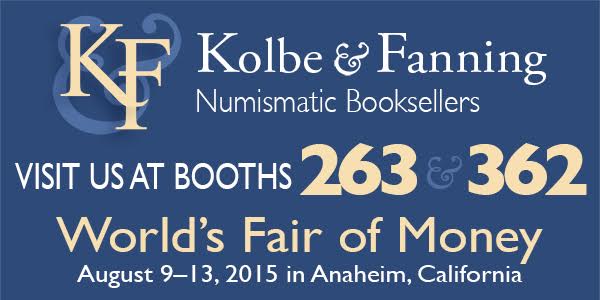
ANA LEGACY SERIES TO INTERVIEW DAVID SUNDMAN

 The American Numismatic Association Legacy Series is a collection of video interviews with hobby leaders and heroes. The next interviewee will be David Sundman of Littleton Coin Company (and former NBS Treasurer). It will take place August 10, 2016 following the Sundman Luncheon honoring David's father, Littleton Founder Maynard Sundman.
The American Numismatic Association Legacy Series is a collection of video interviews with hobby leaders and heroes. The next interviewee will be David Sundman of Littleton Coin Company (and former NBS Treasurer). It will take place August 10, 2016 following the Sundman Luncheon honoring David's father, Littleton Founder Maynard Sundman.
For those who haven't seen them yet, all of the videos filmed to date are available on the ANA web site at the below address. These are high-quality productions with interviewers Steve Roach and Barbara Gregory and a live audience. Below is text from an ANA email announcing the upcoming Sundman interview. -Editor
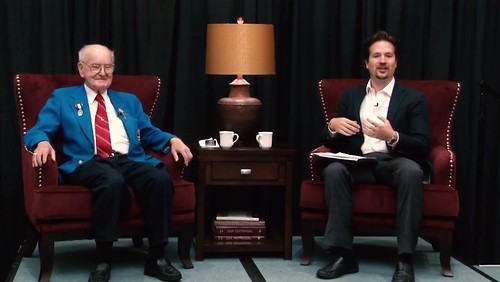
Ray Dillard and Steve Roach
The Legacy Series acquaints collectors with the legends, heroes and icons of numismatics and celebrates their lives and contributions.
Q. David Bowers
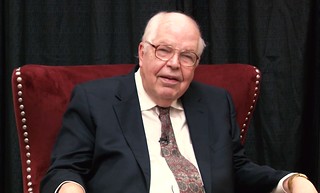 Q. David Bowers started his numismatic career as a coin dealer when he was just a teenager in 1953. He took out his first ad in The Numismatist in 1955, and opened Empire Coin Co. in 1958. Since then, Q. David Bowers has become one of the leading experts in numismatic rarities, and joined forces with Stack's Galleries to form Stack's Bowers Galleries in 2011. In his interview, Bowers explains how he began collecting at a young age, and expands on his career
Q. David Bowers started his numismatic career as a coin dealer when he was just a teenager in 1953. He took out his first ad in The Numismatist in 1955, and opened Empire Coin Co. in 1958. Since then, Q. David Bowers has become one of the leading experts in numismatic rarities, and joined forces with Stack's Galleries to form Stack's Bowers Galleries in 2011. In his interview, Bowers explains how he began collecting at a young age, and expands on his career
Ray Dillard
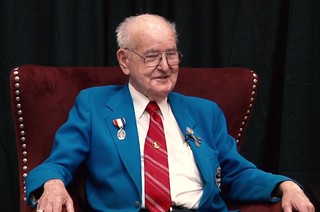 Ray Dillard, affectionately known as "The Father of Elongated Coin Collecting," has been collecting since the 1960s. He started attending ANA conventions with his elongated coin machine in the 1980s. In his interview, Dillard recalls how his love for collecting elongated coins began, and his work within the hobby.
Ray Dillard, affectionately known as "The Father of Elongated Coin Collecting," has been collecting since the 1960s. He started attending ANA conventions with his elongated coin machine in the 1980s. In his interview, Dillard recalls how his love for collecting elongated coins began, and his work within the hobby.
Steve Ivy and Jim Halperin
Steve Ivy and Jim Halperin are co-chairmen of Heritage Auctions, formed in 1982. (Heritage Auctions is the third largest auction house in the world, and the largest auction house in the U.S.) Jim Halperin began running his own part-time coin and stamp dealership at age 16. He became a full-time dealer in 1971 and opened New England Rare Coin Galleries. Steve Ivy began selling rare coins at the age of 14, and opened Steve Ivy Rare Coin Auctions at 26. Ivy and Halperin discuss how they became friends, and eventually partnered to open Heritage Auctions.
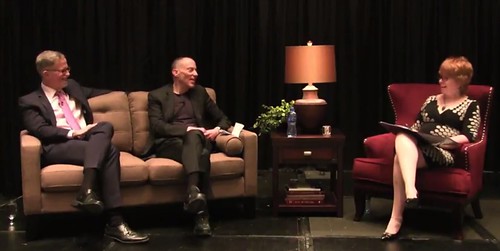
Steve Ivy, Jim Halperin and Barbara Gregory
Fred Weinberg
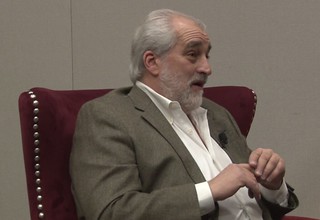 Weinberg has been an avid collector for more than 40 years, and is a nationally recognized expert on error coins. In his interview, Weinberg recalls how he was introduced to the hobby, and how he began his passion for error coins.
Weinberg has been an avid collector for more than 40 years, and is a nationally recognized expert on error coins. In his interview, Weinberg recalls how he was introduced to the hobby, and how he began his passion for error coins.
To view the Legacy Series videos, see:
www.money.org/legacyseries
A BRIEFCASE OF 1794 DOLLARS
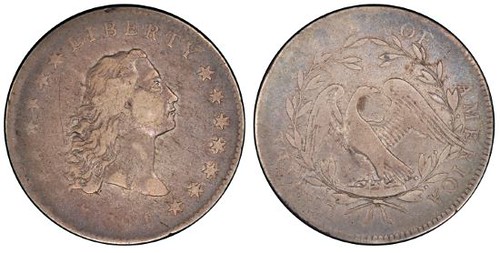
I wish I could have videotaped visits with my friend Jules Reiver of Wilmington, DE. The coin featured in Dave Wnuck's Making the Grade email newsletter #29 reminded me of a great story Jules told. I'd met him through our common interest in numismatic literature, and he invited me to his home several times when I visited Wilmington on business.
Jules was well known as an expert in early U.S. silver coin varieties, and it was not unusual for people to stop at his doorstep asking for advice. One young man he'd been introduced to came by to show Jules his first rare coin purchase - an 1804 dollar! Turns out, the young man was an heir to the duPont fortune.
But it was a different coin that triggered this story. Someone Jules didn't know contacted him asking to stop by and show him some early U.S. coins. Jules agreed, and was intrigued when a chauffeured limousine pulled up and a well-dressed man with a briefcase got out and walked up to his door.
The man said he was in charge of investing funds for a national association of funeral directors. Wanting to diversify, he'd begun buying some coins. Inside the briefcase were dozens of 1794 dollars. Although 2,000 were struck, only about 150 survive, and as a one-year type are in great demand.
Jules examined them and thought them all to be authentic. The gentleman thanked him for his time and returned to his limo. I never heard again from Jules or anyone else about this hoard. Is it still out there? Was Jules pulling my leg? I didn't think so - he was as genuine and down-to-earth as they come, and I had no reason to disbelieve him. I may be misremembering the number of coins, but it was more than just a few. If anyone has information on this group of 1794 dollars, please let us know.
To read the complete Making the Grade issue, see:
Making the Grade #29: The Single (Dream Coin) Issue
(www.davewcoins.com/newsletter/making-the-grade-29-the-single-dream-coin-issue)
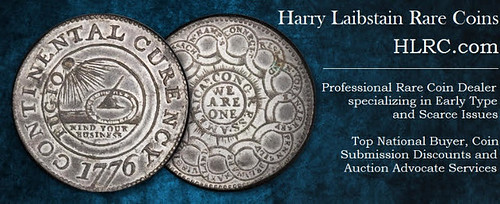
SWITT FAMILY LOSES 1933 DOUBLE EAGLE APPEAL
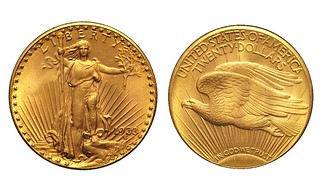 At the time they were minted, the gold pieces had a face value of $20. Today, the ’33 Double Eagles are estimated to be worth about $10 million a pop. If you can sell them, which, as evidenced by a ruling Monday by the Third U.S. Circuit Court of Appeals, Uncle Sam is loath to let happen.
At the time they were minted, the gold pieces had a face value of $20. Today, the ’33 Double Eagles are estimated to be worth about $10 million a pop. If you can sell them, which, as evidenced by a ruling Monday by the Third U.S. Circuit Court of Appeals, Uncle Sam is loath to let happen.
By 1933, coins made of gold had lost their luster, at least to the newly elected Franklin D. Roosevelt. “We are now off the gold standard,” he told a group of advisers, as UC Davis historian Eric Rauchway recounted at Bloomberg. The United States Mint was ordered to exterminate the Saint-Gaudens coins.
But Roosevelt could not call the mint off before 445,000 coins had been pressed. As Jay Brahin, a consultant and coin collector told Bloomberg in 2011, the ’33 Double Eagle was something of a “freak.”
“The coins shouldn’t have been minted, but they were. They weren’t meant to circulate, but some did,” he said. “And why has the government pursued them so arduously? That’s one of the mysteries.”
Almost all of the 445,000 coins — 15 tons worth of metal — were stuffed into hundreds of canvas bags and locked behind triple steel doors in a Philadelphia vault, according to Bloomberg. By 1937, they had been melted into gold bars destined for Fort Knox. Two of the eagles found sanctuary at the Smithsonian Institution.
And a handful slipped into the sticky fingers of the American public.
In 1944, the Secret Service caught wind of the purloined coins after one was successfully sold to Egypt’s King Farouk. The agents determined that a Mint cashier by the name of George McCann had stolen several coins in 1934. A few were traced to a merchant in Philadelphia, one Israel Switt. There, the trail went cold.
Half a century would pass before the Double Eagles surfaced again.
First, King Faurok’s coin was sold at auction for a record price in 2002. U.S. government officials objected, but settled on splitting the $7.59 million it fetched between the seller and the Mint.
And a short time thereafter, Switt’s coins reappeared. Joan S. Langbord, daughter of Switt, said she found 10 Double Eagles in a family safe-deposit box in 2003. Langbord, along with her children Roy and David, notified the Mint of the coins in September 2004. The family gave the coins over to the Secret Service for authentication.
The Mint did not hand them back.
“These Double Eagles were never lawfully issued, but instead, were taken from the United States Mint at Philadelphia in an unlawful manner more than 70 years ago,” said David Lebryk, acting director of the Mint, in a 2005 news release. As Reuters noted, Switt’s descendants were “the family of a thief” in the eyes of the government.
The Langbords sued. According to the Third Circuit ruling, the Mint wrote to the Langbords that, “The United States Mint has no intention of seeking forfeiture of these ten Double Eagles because they are, and always have been, property belonging to the United States; this makes forfeiture proceedings entirely unnecessary.”
It would spark a legal battle that lasted for more than a decade. The initial 2011 jury ruling favored the Mint. But in 2015, Langbords appeared to score a victory. Because the government had taken so long to respond to the Langbords’ claim — too long, in the view of a Philadelphia federal appeals court — the Double Eagles had to be returned.
“The Court’s decision upholds the rule of law and makes clear that the government will be held accountable when it violates the rights of its citizens and the clear mandate of Congress,” the family’s attorney, Barry Berke, emailed The Washington Post at the time.
The fight over the coins was not over yet. Federal officials, who had been “weighing our options” since 2015, as The Post noted, scored a win in Philadelphia on Monday. In a 9-3 vote, the appeals court ruled in favor of the United States once again.
For the Double Eagles it seems the the only judicial place left to go is up. “The Langbord family fully intends to seek review by the Supreme Court,” Berke told Reuters on Monday, “of the important issue of the unbridled power of the government to take and keep a citizen’s property.”
To read the complete article, see:
A high-stakes dispute over ten pieces of gold’: Court reclaims priceless Double Eagle coins for U.S. government
(www.washingtonpost.com/news/morning-mix/wp/2016/08/02/a-high-stakes-dispute-over-ten-pieces-of-gold-court-reclaims-priceless-double-eagle-coins-for-us-government/)
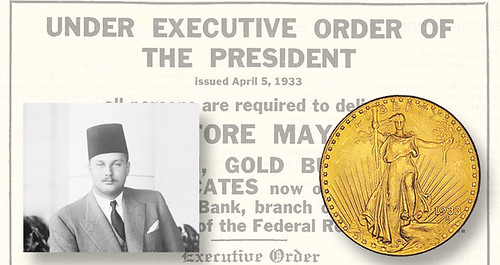
It looks like the government will get the keep the Langbord family’s 10 1933 Saint-Gaudens gold double eagles that were allegedly discovered in a family’s safe deposit box shortly after the sole 1933 double eagle that can be privately owned was sold for $7.6 million in 2002. A decade-long legal battle between the family and the government followed to decide ownership of the valuable coins.
In an Aug. 1 ruling by the United States Court of Appeals for the Third Circuit, nine judges joined a 60-page decision finding that while there were errors at the trial level, these mistakes did not affect the outcome. In doing this, the majority sided with a jury’s 2011 decision awarding the coins to the government.
To read the complete article, see:
Langbord family loses appeal to regain ownership of 1933 double eagles
(www.coinworld.com/news/us-coins/2016/08/langboard-family-loses-appeal-1933-double-eagle-case.all.html)
The government has won again. It will not have to return 10 1933 Saint-Gaudens $20 gold pieces to the Langbord family, which had asked the Mint to authenticate them after they were located in a safe deposit box of material inherited from Philadelphia jeweler Israel Switt by his daughter Joan Langbord.
The full Third Circuit Court of Appeals in a decision filed Aug. 1, ruled for the government 9-3.
While collectors have sided with the Langbords and drooled at the possibility of the coins being eventually sold into the numismatic community, the court said the law sides with the government.
The legal back and forth that has gone on since the Mint refused to return the coins to the family in 2005, was not without its moments of hope for the Langbords.
Berry H. Berke, a New York lawyer who represents the family, has proven time and again to be legally resourceful in the battle with the government.
What happens next?
Berke cannot be counted out.
Lesser individuals would never have begun the legal proceedings in the first place to get the coins back after the government’s decision not to return them.
Collectors would cheer any other legal rabbits Berke can pull out of his hat.
The question is, will he?
No matter, Berke has reached a status akin to a numismatic super hero.
So if you could have a numismatic superpower, what would it be? Foretell future third-party coin grades? Faceslap eBay trolls who pretend not to know the crap they peddle is fake?
Come to think of it, Eric Newman is a superhero who's been fighting for numismatic truth and justice his entire career. Who will wear that cape next? Doug Davis is one contender - see the following articles on counterfeiting. -Editor
To read the complete article, see:
Government wins 1933 gold $20s
(www.numismaticnews.net/buzz/government-wins-1933-gold-20s)

NUMISMATIC FAKES ON THE RISE
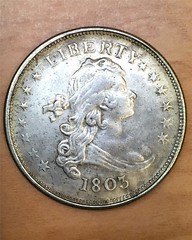 The Professional Numismatists Guild has recently posted a warning that there are an increasingly significant number of counterfeit coins appearing in the market.
The Professional Numismatists Guild has recently posted a warning that there are an increasingly significant number of counterfeit coins appearing in the market.
“It is clear there is an increase in the types of fakes sold by unscrupulous dealers,” said PNG President Dana Samuelson. “These sales of counterfeit coins are potentially a multi-million dollar problem for the public. There’s an old saying that can help buyers avoid problems: If you don’t know coins, you better know your dealer.”
Samuelson continued: “We conducted an informal inquiry of PNG members and PNG Accredited Precious Metals Dealers (APMD) about what they’re encountering now in the marketplace. They have seen everything from counterfeits of vintage rare coins to modern precious metal items. These include fakes of popular century-old U.S. Morgan and Peace design silver dollars to current gold and silver American Eagles, gold U.S. Buffalo coins, silver and gold Chinese Pandas, and Canadian silver and gold Maple Leaf coins. We’re also seeing spurious gold and silver ingots.”
According to Samuelson, “Professional dealers who look at classic U.S. coins and bullion items all day long are usually not fooled by these spurious items, but to the untrained eye they often look like the real thing. Many of the fakes apparently are originating in China and then offered online by various sellers. It is imperative that collectors, investors and the general public deal only with reputable, knowledgeable experts who offer a guarantee of authenticity.”
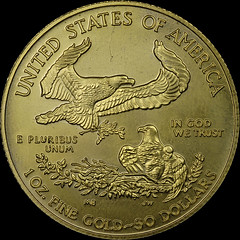 Max Spiegel is a vice president of Certified Collectibles Group, the parent company of Numismatic Guaranty Corporation. In turn, NGC is the official grading service for PNG. Spiegel recently acknowledged the company has examined fake 2012 gold American Eagle $50 coins exhibiting poorly defined facial and hair details on the obverse. The same coins used incorrect lettering fonts for the legends and date. Since these fakes were not composed of gold the metal color was incorrect as well.
Max Spiegel is a vice president of Certified Collectibles Group, the parent company of Numismatic Guaranty Corporation. In turn, NGC is the official grading service for PNG. Spiegel recently acknowledged the company has examined fake 2012 gold American Eagle $50 coins exhibiting poorly defined facial and hair details on the obverse. The same coins used incorrect lettering fonts for the legends and date. Since these fakes were not composed of gold the metal color was incorrect as well.
Two PNG member dealers recently reported viewing counterfeit 19th century Draped Bust, Seated Liberty and Morgan silver dollars, as well as 20th century Morgan and Peace silver dollars, all being sold in both mainland China and Hong Kong for as little as $1 to $3 at flea markets.
Speaking from personal experience, I recently viewed a counterfeit 1933 $20 Double Eagle and a gold American Eagle dated 1901. Counterfeit Trade dollars are commonplace, typically struck of non-precious metals.
Professional Coin Grading Service has previously reported counterfeit encapsulations meant to mimic their encapsulations. The coins in these fake “slabs” were also bogus.
To read the complete article, see:
PNG warns counterfeit danger is increasing
(www.numismaticnews.net/article/png-warns-counterfeit-danger-is-increasing)
To read the PNG press release, see:
Use Caution To Avoid Gold And Silver Counterfeits, Advises Professional Numismatists Guild
(http://pngdealer.org/use-caution-to-avoid-gold-and-silver-counterfeits-advises-professional-numismatists-guild/)
COUNTERFEIT SLABBED AND BULLION COINS SOUGHT
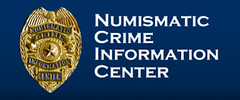 The Numismatic Crime Information Center will be set up at the Robbery Investigators of Texas Conference to be held on August 17, 2016 at the Omni Hotel in Fort Worth, Texas. Over three hundred investigators from Texas and surrounding states will be in attendance.
The Numismatic Crime Information Center will be set up at the Robbery Investigators of Texas Conference to be held on August 17, 2016 at the Omni Hotel in Fort Worth, Texas. Over three hundred investigators from Texas and surrounding states will be in attendance.
I am currently looking for examples of counterfeit slabs and raw bullion (one ounce gold eagles, buffalo's, key date coins, silver bars, perth gold bars being bought off of Alibaba.com etc.,) to display for educational purposes. Any counterfeit mint boxed coins would also be beneficial.
All coins sent will be returned after the conference. Please send by August 15, 2016 to P.O. Box 14080 Arlington, Texas 76094 or I will be attending the ANA in Anaheim from August 8-10 and could pick them up in person. I can be contacted at the number below.
Thank you for your assistance.
Doug Davis
Founder/President
817-723-7231
doug@numismaticcrimes.org
For more information about the Numismatic Crime Information Center, see:
http://numismaticcrimes.org/
THE BOOK BAZARRE
DENNIS TUCKER TALKS BOOKS AND MEDALS AT ANA
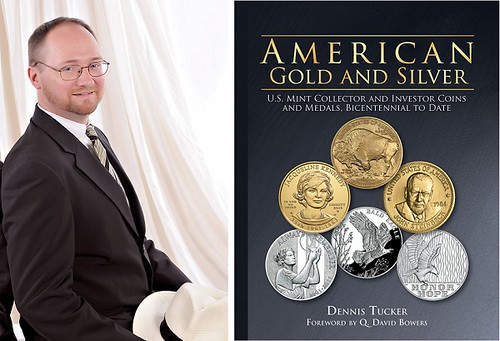
Dennis Tucker, author of American Gold and Silver: U.S. Mint Collector and Investor Coins and Medals, Bicentennial to Date, will give two talks at the 2016 American Numismatic Association World’s Fair of Money in Anaheim.
Thursday, August 11, at 4:00 p.m.—“Money Talks” presentation: “So-Called Dollars in the Mega Red Book,” with Jeff Shevlin and William D. Hyder. For the first time ever, an illustrated appendix on So-Called Dollars appears in the latest Mega Red, the deluxe edition of the Guide Book of United States Coins. Shevlin, Hyder, and Tucker discuss the importance of these fun-to-collect pieces of American history. (Room Avila A, fourth floor of the Anaheim Hilton, adjacent to the Anaheim Convention Center)
Friday, August 12, at 11:00 a.m.—“Money Talks” presentation: “Hidden Profits in Modern U.S. Mint Silver and Gold Medals.” Since the early 1970s the U.S. Mint has produced more than 50 collectible silver and gold medals—beautiful and sometimes rare works of art. Some were runaway best-sellers and made national headlines. Others are relatively unknown. Learn which ones are “sleepers”—underappreciated treasures with profit potential waiting to be discovered. (Room Avila A, fourth floor of the Anaheim Hilton, adjacent to the Anaheim Convention Center)
Tucker is a life member of the ANA and a past governor of the Token and Medal Society. He has been the publisher at Whitman Publishing since 2004 and serves as an advisor to the Secretary of the Treasury as a member of the Citizens Coinage Advisory Committee.
To read the complete article, see:
Whitman Author Dennis Tucker Will Share Collector and Investor Advice and Research on U.S. Medals at the ANA World’s Fair of Money
(http://news.coinupdate.com/whitman-author-dennis-tucker-will-share-collector-and-investor-advice-and-research-on-u-s-medals-at-the-ana-worlds-fair-of-money/)
ANS ANNOUNCES LAUNCH OF NEW WEBSITE
The American Numismatic Society (ANS) is delighted to announce the debut of its new website, http://numismatics.org/, which features improved navigation, search capability, and user interface to help numismatists explore, learn, shop, and conduct research with ease.
The newly-launched website maintains the same domain name as the previous site, and allows for all the same information to be accessed. In addition, this enhanced website puts the piloting of information in the hands of the user in a clear and organized manner. The ANS site enables access to the Digital Library, historical archives in the Archer database, the library catalogue under DONUM, and a link to the ANS collection in MANTIS, which is continually being uploaded with new images of currency. It also provides direct access to the Society’s individualized databases, including OCRE, CRRO, and PELLA to name a few.
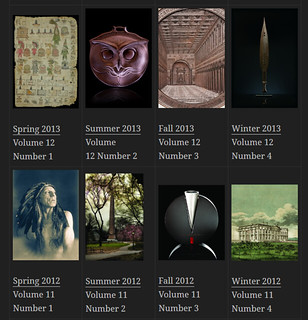 Of particular note is the updated section on the ANS Magazine, which enables visitors to view the e-edition of a recent issue which contains enlargeable images and active links to the ANS collection on MANTIS in addition to live links to other sites mentioned in the articles. This serves as a preview of a benefit of membership – only those who are members of the ANS will have access to the e-versions of each current and recent issues. All magazine issues from 2002–2013 are now available as Open Access at
http://numismatics.org/magazine/issues.
Of particular note is the updated section on the ANS Magazine, which enables visitors to view the e-edition of a recent issue which contains enlargeable images and active links to the ANS collection on MANTIS in addition to live links to other sites mentioned in the articles. This serves as a preview of a benefit of membership – only those who are members of the ANS will have access to the e-versions of each current and recent issues. All magazine issues from 2002–2013 are now available as Open Access at
http://numismatics.org/magazine/issues.
The ANS Store has also been given a new look, yet still allows users to browse by title of publication or subject matter. Online publication purchases will be shipped by Casemate Academic/Oxbow, book distributor for the ANS. Many older publications are also available for free as Open Access.
“The new ANS website was an undertaking a long time in the making, and we are proud to have it live for our members, friends, and anyone with an interest in numismatics,” Andrew Reinhard, ANS Director of Publications, said. “Our goal is for this enhanced site to be inviting for newcomers, amateur numismatists, seasoned academics and researchers, and everyone in between, and we hope visitors will return to enhance their knowledge, as we continually update the site with new information, links, images, and other items to aid in our advancement of numismatic exploration.”
Please direct questions and comments to Andrew Reinhard, ANS Director of Publications, at areinhard@numismatics.org.
To visit the new ANS web site, see:
http://numismatics.org/

THE ZERO EURO BANKNOTE
Ron Haller-Williams writes:
You remember the anti-corruption/bribery Zero Rupee banknote (and also available for numerous other countries/currencies)? Well, here is a zero Euro banknote, but simply as a souvenir - of Filitosa, the site of Corsica's prehistoric "capital".
There are several others as souvenirs of various places: Château du Clos Lucé, Fort Boyard, Grotte de la Cocalière, L'Ile d'Oléron, L'Ile de Ré, Les Arènes d'Arles, Musée du Bonbon Haribo, etc.
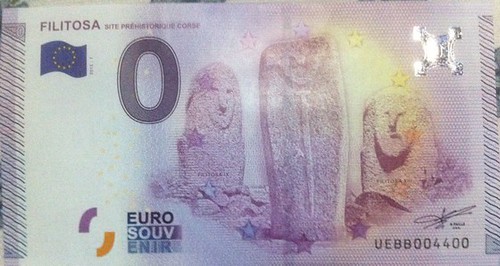
For more on the Filitosa Zero Euro note, see:
BT de Filitosa
(www.amisdeleuro.org/forum/viewtopic.php?f=151&t=7044)
Billet Touristique 0 Euro Souvenir
(www.numismatic64.fr/Billet-Souvenir-Touristique-0-Euro-2015-Site-Prehistorique-de-Filitos)
Billets Touristiques 0 Euro
(www.numismatic64.fr/epages/box18493.sf/fr_FR/?ObjectPath=/Shops/box18493/Categories/%22Billets%20Touristiques%20Souvenirs%22)
To read an earlier E-Sylum article, see:
MORE ON COLLECTING ZERO RUPEE NOTES
(http://www.coinbooks.org/esylum_v19n23a34.html)
RESTAURANT GOES CASHLESS AND NO ONE CARES
Patrons of Sweetgreen are very particular about their salads. When the company recently removed bacon and sriracha from the menu, customers took to social media to complain. But after a handful of Sweetgreen restaurants stopped accepting cash in January, barely anyone noticed, according to the company’s owners.
Even Sweetgreen executives thought going cashless was “a harebrained idea” at first, said Jonathan Neman, a co-founder and co-chief executive of the company. “But we looked around and saw that airlines haven’t been taking cash for a while.” At Sweetgreen’s locations throughout the United States, cash purchases have declined to less than 10 percent today from 40 percent of all transactions when they opened their first location nine years ago, he said. Sweetgreen now has 48 locations.
Although America is far from becoming a cashless society, cash transactions are less frequent than even a few years ago and some restaurant owners are betting that customers will be comfortable doing away with cash for convenience.
Restaurants like Sweetgreen are pushing credit and debit cards and mobile apps for payments. Apps enable restaurants to gather data and feedback, and allow consumers to order ahead and skip long lines.
“One of the biggest complaints at Sweetgreen is the line, so by reducing cash we’re able to serve customers a lot faster,” Mr. Neman said. At the six Sweetgreen locations where cash is not accepted, employees can perform 5 to 15 percent more transactions an hour, he said.
In a cash-free environment, employees are also safer, Mr. Neman said. There have been only a handful of thefts and robberies since Sweetgreen has been in business, but he said he believed that going cashless deterred thieves. “I don’t think anyone’s coming in to steal arugula.”
“I think they were ahead of the trend,” Sam Oches, editor of the quick-service restaurant industry magazine QSR, said of Split Bread. Sweetgreen might have an easier time this year, because of increasing app use and the brand’s popularity. “Sweetgreen is very emblematic of the future of the fast-casual industry,” Mr. Oches said. “If anyone is going to make this work, it’d be them.”
Going cash-free, though, can seem to run counter to restaurant hospitality training. The hardest group to persuade of the benefits of a cashless environment might have been his employees, said Alan Bekerman, the founder and chief executive of iQ Food, a chain of healthy fast-casual restaurants in Toronto. When Mr. Bekerman started discussing his cashless plan with employees, they were aghast.
“We are bred to say ‘yes’ to everything,” said Mr. Bekerman, who opened two cash-free restaurants in February and plans to convert his three other locations by the end of the year. “But when we jumped in and did it, there really hasn’t been nearly as much chaos or hate mail or pushback or that stuff that we’re used to getting when we make changes as we expected.”
To read the complete article, see:
At Sweetgreen, a Suitcase Full of Cash Won’t Buy You Lunch
(www.nytimes.com/2016/07/31/business/where-a-suitcase-full-of-cash-wont-buy-you-lunch.html?_r=0)

MORE ON FATHER AND SON ENGINEERS BRUNEL
Thanks to Joe and Yossi for setting me straight. Philip Mernick and David Gladfelter provide further numismatic information below. -Editor
Brunel Medals
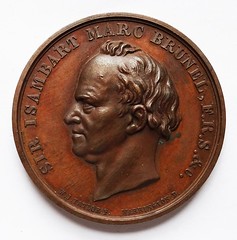
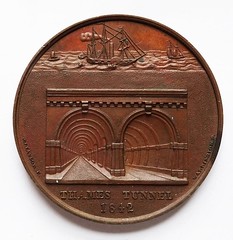
1842 Isambard Marc Brunel Thames Tunnel medal
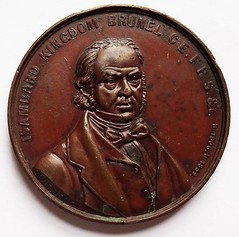
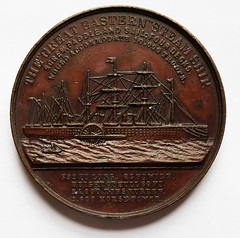
1859 Isambard Kingdom Brunel Great Eastern Steamship medal
Harrison & Sons Specimen Notes
David Gladfelter writes:
The former British security printing firm of Harrison & Sons Ltd. used a portrait of the famous marine engineer Isambard Kingdom Brunel to illustrate many varieties of specimen notes they employed to promote their business. Two different varieties are shown here. Along with Brunel’s portrait and vital statistics are shown images of two bridges and several ships that he designed. Security features include a watermark in the white space, visible from both sides, and variable color printing. (I have to say, the facial coloration on both specimens leaves something to be desired.)
After more than 200 years in business, Harrison & Sons was acquired by an equally venerable organization, De La Rue Company, in 1997. For more information, see Gene Hessler, The International Engraver’s Line (2005).
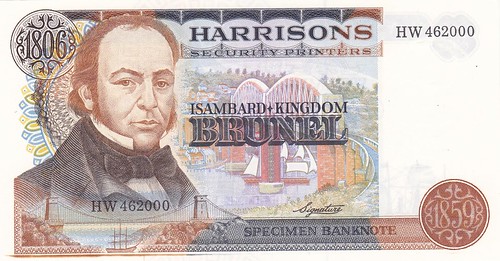
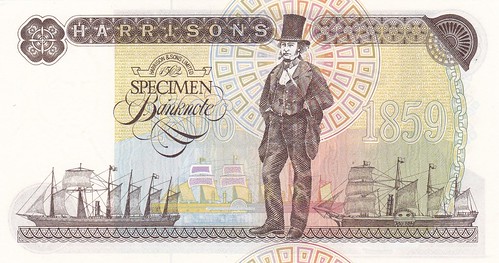
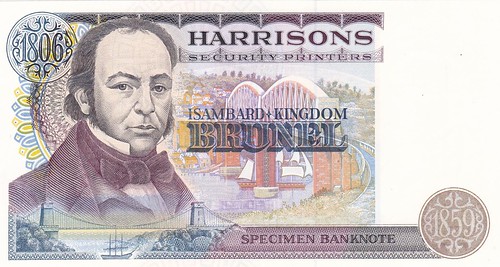
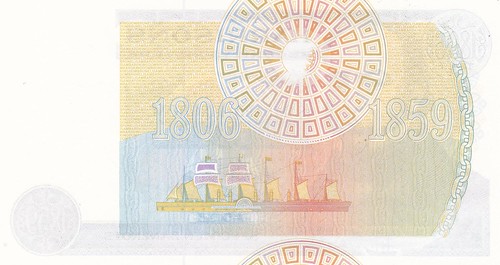
To read the earlier E-Sylum article, see:
FATHER AND SON: THE ENGINEERS BRUNEL
(www.coinbooks.org/esylum_v19n31a15.html)
THE MEDALS OF CHARLES CUSHING WRIGHT
Charles Cushing Wright (1796-1854) was an important American artist and engraver. Often called “The First American Medalist,” Wright’s work is highly regarded for its quality and attention to detail. Many of his most beloved medals were produced in recognition of generals in the Mexican-American War, which took place from 1846-1848. This war occurred as the United States pushed further and further west under the doctrine of “Manifest Destiny” espoused by President James K. Polk.
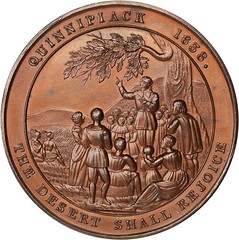
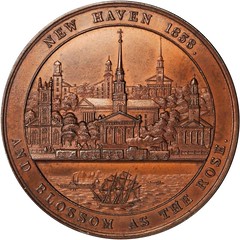
Wright's 1838 New Haven Bicentennial Medal.
When the battles ended, the United States claimed victory from a disorganized Mexico and gained nearly a third of Mexico’s territory. These lands included nearly all of present-day Arizona, California, Nevada, New Mexico and Utah. Two of the most respected generals in American history were involved in the conflict: Major General Winfield Scott and Major General Zachary Taylor. In fact, just nine months after the end of the war Taylor would be elected president.
At the request of Congress, Wright designed a medal in honor of Major General Zachary Taylor, who would be elected president just nine months after the end of the war. It is designated MI-24 by R.W. Julian in Medals of the United States Mint: The First Century, 1792-1892.
There had already been two medals struck in honor of Taylor in 1847, but the quality was not very high and the medals were attacked in national newspapers. As a result, the Mint looked outside its staff to find an engraver for this new medal. They would not be disappointed with Wright’s work, which was completed on June 15, 1849. The first medal was struck in pure California gold on July 4th of that year.
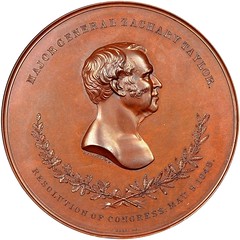
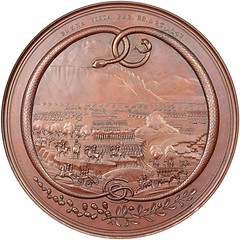
Wright’s Zachary Taylor medals measure an astonishing 90mm across, and the engraving work is extremely detailed and intricate. The obverse features a well-executed bust of Zachary Taylor facing right, with oak branches and laurel below. The reverse is clearly the highlight of this medal, however.
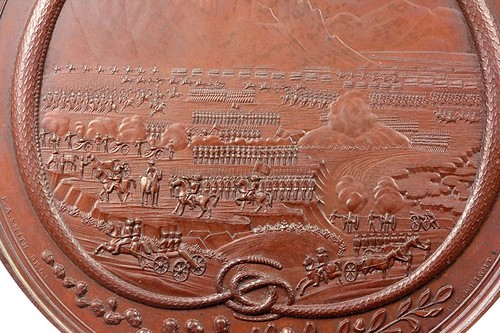
It features an incredibly ornate battle scene encircled with two intertwining snakes. The engraving is intricately detailed with literally hundreds of soldiers, each individually sculpted and many holding long guns with bayonets. Even the tiny American flags are complete with stars and stripes. Others can be seen riding horses and trumpeting, as well as numerous cannons with smoke billowing from their bores. Wright was paid the handsome sum of $1,600 for his work on this medal in 1849, the equivalent of around $46,000 today. Julian calls the price “a bargain in view of the high quality of the work.”
To read the complete article, see:
Charles Cushing Wright and His Medals
(www.ngccoin.com/news/article/5439/)
THE BOOK BAZARRE
THE ENCASED HALF DIME MYSTERY
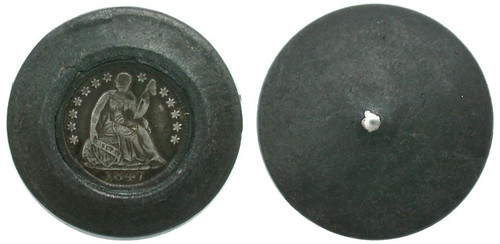
Seated Liberty half-dime collector Stephen Crain approached TAMS member Paul Cunnigham with a question he addressed to many dealers, “Do you know what my encased half dime might be? Have you ever seen one before?” Paul introduced Stephen to the TAMS Journal editors, Bill Hyder and Fred Holabird. Now, the conversation proceeded anew.
When Stephen first began his quest, he had five odd Seated Liberty half dimes encased in a heavy metal that he believed to be zinc. After showing them to a number of dealers and inquiring as to what they might be, he still had no answers. However, he acquired four additional examples of the odd items.
Stephen published his collection of these oddities in the Fall 2014 issue of The Gobrecht Journal, published by the Liberty Seated Collectors Club. With no answers forthcoming by Fall 2015, the journal editor granted permission for TAMS to adapt the article to widen the net in search of answers. Fred believed the answer could likely be found in a tantalizing letter to a newspaper editor that Crain cited in his article. The letter commented on an 1849 lecture delivered in the Corinthian Hall in Rochester, New York. The writer mentioned a “half dime set in zinc” placed in a person’s hand. Fred’s interest in the Gold Rush era attracted his attention to a statement in the letter that gold instead of silver might serve the purpose of “allaying the California fever.”
Bill Hyder adds:
Stephen Crain did the original work. Fred and I took on the task of finding more information by re-publishing the original article in the LSCC after a conversation with Stephen. Preparing our layout, I took a shot at my own review following up on a comment from Fred. That led to the article as published. One of my goals as president of TAMS and co-editor of the TAMS Journal has been to foster cooperation with other numismatic organizations. That led to the simultaneous publication of our article in the Gobrecht Journal and the TAMS Journal.
The article goes on to list 13 known facts about the objects Stephen had assembled. See the original article for those details. -Editor
The letter appeared in the Frederic Douglass’ Paper on October 19, 1849, and it reported on the writer’s observations at a lecture held in the Corinthian Hall in Rochester, New York. Corinthian Hall hosted political lectures, anti-slavery lectures, séances, and lecturers on the latest healing fads.
The letter, dated October 10, mentions that the lecture dealt with the influence of mind upon mind. The demonstrations involved placing a half-dime set in zinc in the hands of the volunteer subjects. With a lucky Google search, we learned that it was the Rev. John Bovee Dods who arrived in Rochester in early October to lecture on and demonstrate the power of Electrical Psychology (his own branch of mesmerism or hypnotism) to cure disease.
The diameters of the encased half dimes collected by Stephen vary in size from a maximum of 29.83 mm to a minimum of 26.30 mm. The thickness of the objects also varied greatly; no two the same. They range from a maximum of 11.01 mm to a minimum of 5.27 mm. In other words, they fit comfortably in the palm of the hand as we all can attest after handling the nine examples presented to us. Two of them appear to have a copper core, another appears to have a silver core, but none have been tested. They certainly seem to fit the description of the half dimes mentioned in the letter to the newspaper.
So how does Dods’ electrical psychology relate to the zinc encased half dimes?
The discovery of electricity and galvanism allowed Dods to move beyond simple hypnosis. Dods describes his healing practice in his lectures presented to the U.S. Congress that were published as The Philosophy of Mesmerism and Electrical Psychology (various printings and publishers from the 1840s to the 1880s, modern reprints are still available):
Take pure zinc and silver, with a copper wire, as a conductor, passed through zinc, so as to come in contact with the silver. For convenience, take a piece of zinc the size of a cent [that would be a large cent at the time], but somewhat thicker, and imbed a five-cent piece in its center, and pass a small copper wire, as a rivet, through both. Place this coin in the palm of the hand, with the silver side up, and request him to bring it within about a foot of his eyes.
Dods continues on to describe how the subject must remain motionless, staring at the coin for 20 or 25 minutes. Most subjects will now be in the psychological state of inestimable blessing.
The galvanic reaction between zinc and silver was well known in the 1830s. One test recommended to identify counterfeit silver coins involved placing a clean strip of zinc on your tongue and silver half-dime under your tongue. When you closed your mouth and brought pressure on the two items, a distinctive taste would be detected owing to the galvanic response. If you then replaced the known silver coin with the suspect coin, you would know it was counterfeit if no taste was detected.
What we do know about these encased half dimes is that someone was making the “electro-magnetic coins” for Dods and other practioners. Dods himself must have sold them to his students as he trained them in his philosophy and practice. However, we have not found any advertisements or other printed matter that mention or picture the “coins.”
And what about the reference to gold and the Gold Rush? By October 1849, the lure of gold had many men leaving their jobs and families in search of making their fortune. We propose that the letter writer was drawing analogy between subjects being mesmerized by the shiny surface of the silver coin and the fever of shiny gold wealth that had mesmerized the nation. We leave it to the reader to decide if the evidence presented here has solved the mystery of the encased half dimes.
For more information on LSCC and TAMS, see:
www.lsccweb.org
www.tokenandmedal.org
To read the earlier E-Sylum article, see:
SELECTIONS FROM PRESIDENTIAL AUCTION 86 : Lot 30: Richardson's Battery
(www.coinbooks.org/esylum_v19n31a20.html)
SAN FRANCISCO MINT CHIMNEY SOOT PRESERVED IN ART
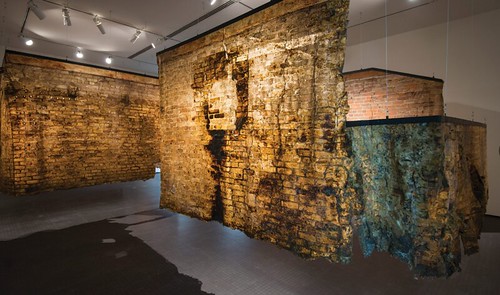
The final part of the group show is a spectacular latex cast of the old United States Mint created by Jorge Otero-Pailos as part of his ongoing series The Ethics of Dust. Layers upon layers of latex are actively gathered by Otero-Pailos’s team as they extract the actual dirt and dust that has accumulated over time on the mint—materials that have become a part of the makeup and history of the building.
What would normally be thought of as the opponent in the preservation process—the visible and unwanted pollution and grime of the building—becomes a thickened, draped, semi-translucent form echoing the multidimensional themes of the exhibit in phenomenological and poetic harmonies.
Visitors pass between these “newly” hung walls of the existing building, walls that have been translated and dispossessed of their physicality. Somewhere in the middle of painting, installation, and architecture, this series of experimental preservation artifacts is able to capture an unspoken essence, an architectural potential, and an environmental actuality with a deft hand and an elegant spirit of means and materiality.
By cleaning the walls in this profoundly contrasting style to how traditional conservation would act to erase the traces of dirt, the passage of time and pollution are able to reveal an intrinsic truth concerning the aging process of buildings, allowing the copy, both interpretation and original, to move to the forefront.
To read the complete article, see:
Boundary-pushing exhibition explores time and scale in architecture and the arts
(http://archpaper.com/2016/08/slow-dialogues-time-space-scale-ybca/#gallery-0-slide-0)
THE BOOK BAZARRE
NEW FILM 'THE HIT' HAS COIN-DRIVEN PLOT THEME
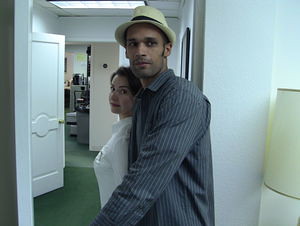 A Great Neck law office recently crossed paths with a story of ancient Egyptian folklore.
A Great Neck law office recently crossed paths with a story of ancient Egyptian folklore.
“The Hit,” an independent film, shot scenes at the law office of Elias C. Schwartz at 343 Great Neck Road.
“He has Hollywood clientele and he saw my resume and my pitch and I told him we have kind of a unique style and gave him all the background,” said A. J. Cross, the film’s director and lead actor. “He was eager to help us out.”
Schwartz said it was the first time a movie had been filmed in his office and that he was willing to help Cross because of his own appreciation for the arts.
The film, Cross said, is a romantic comedy that tells the story of a man from the United Kingdom and a woman from New York City on their journey to reclaim a rare coin that leads to a lost treasure belonging to ancient Egyptians.
“The film brings Kam, this young wide-eyed guy who has this kind of appreciation for the artistic value of objects, from the United Kingdom to New York not knowing what will happen,” Cross said. “He meets his Juliet. He meets the girl who has become his light in the darkness, who lights the way for him because he’s an outsider.”
In their quest to secure the coin, he said, Kam and his partner, Val, played by Inna Beynishes, cross paths with “repo men” seeking to find the coin for themselves.
While he was attending St. John’s University, he studied abroad in Rome, where he saw the Trevi Fountain, which served as one of the influences for the film.
“The fountain is this place where you throw a coin behind your back and it says if you throw a coin into the fountain you will always go back to Rome,” Cross said. “That experience in Rome that I had and the legend of the fountain subconsciously caused me to write this movie.”
After graduating, he said he worked at a museum in Morristown, N.J., which also influenced his writing of the film. “When you work at a museum, it is a magical place where history comes alive,” Cross said.
He also said that critically acclaimed films like “National Treasure” and “The Mummy” influenced the film.
Cross, a Queens resident, said that once the film is completed, he wanted to send it to film festivals and hold private screenings, including one in Great Neck.
He said his distribution plan was to have the film available on popular streaming services like Netflix and Amazon.
To read the complete article, see:
Rare coin chase leads film through Great Neck office
(www.theislandnow.com/great_neck/news/rare-coin-chase-leads-film-through-great-neck-office/article_805b123a-5a68-11e6-a3a5-1739777c8d8a.html)
POLICE CHALLENGE COINS COLLECTED AT DNC
Jeff Starck of Coin World writes:
Here is a fun story about a collector of “challenge coins” adding to his collection during the Democratic National Convention. He has what must be several thousand examples of police challenge coins from around the country in his collection.
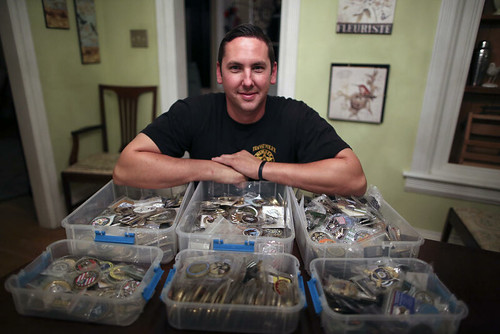
Jason Walters will always remember working this week's Democratic National Convention in Philadelphia -- and not just because he's detailed to Center City during the event for his job as a Transit Police officer. Walters, who's been on SEPTA's police force about eight years, spent the week meeting other law-enforcement officers from agencies far and wide to exchange police "challenge coins" commemorating each department and unit's work on the national convention.
"It adds a little recreation to police work," Walters, a K-9 officer, told NBC10.
Walters said he's already collected about a dozen different challenge coins during the DNC, from agencies including the U.S. Secret Service, U.S. Marshals, Federal Air Marshals, and specialized units like his own, and the Philadelphia Police Department's Marine Unit, Counter-Terrorism Operations, Highway Patrol and 22nd Police District.
Walters has always been a collector, and has an extensive collection of various police challenge coins from across the nation. He said officers will trade coins. He had 150 made up for SEPTA Police's K-9 unit for the DNC, and he was down to about 15 left on Wednesday. He showed off his collection to NBC10 on Tuesday night.
Police challenge coins also popped up during the Papal Visit. Walters said they've long been a tradition in police departments in cities like New York and Los Angeles, but they're fairly new to local officers.
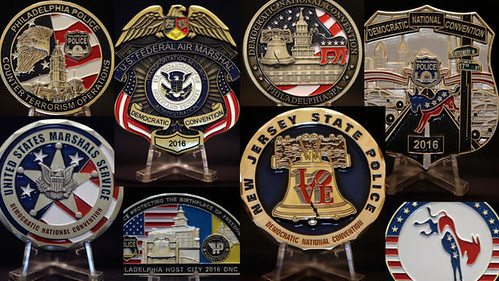
"I actually started out with [police] patches. The challenge coins became huge," Walters said. "It wasn't really that big in this area until right before the Pope came."
Walters said it's usually just one officer in a certain unit or department who decides to have challenge coins made that gets everyone involved. He said he's talked to officers from about a dozen different agencies during the DNC to swap coins.
To read the complete article, see:
'It Creates a Brotherhood': Police Swap Commemorative Challenge Coins During DNC
(www.nbcphiladelphia.com/news/local/DNC-Police-Challenge-Coins-SEPTA-Philadelphia-Police-388471372.html)
INDECISION 2016: A FLIPPING COIN FROM LONG-STANTON
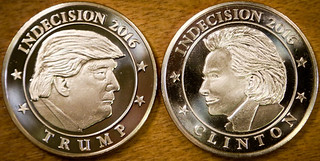 Having trouble deciding if you will vote for the Democratic or Republican candidate for President Nov. 8? You could flip a coin. Or to be task specific, why not flip the “Indecision 2016” campaign medal recently issued by the Long-Stanton Manufacturing Company in West Chester, Ohio.
Having trouble deciding if you will vote for the Democratic or Republican candidate for President Nov. 8? You could flip a coin. Or to be task specific, why not flip the “Indecision 2016” campaign medal recently issued by the Long-Stanton Manufacturing Company in West Chester, Ohio.
The Long-Stanton “coin,” as the company calls it, shows a bust of Republican candidate Donald Trump facing right on one side, with Democratic candidate Hillary Clinton facing left on the other. For those people considering voting for a third-party candidate, you can always hope the coin lands on its side.
According to a statement released by the firm, “To us at Long-Stanton, the real similarity of the presidential race of 1860 [between Stephen A. Douglas and Abraham Lincoln] and 2016 lies not in the issues but in the name of our company’s founder, John Stanton.
“Records show that before Mr. Stanton started Long-Stanton Manufacturing in 1862, he owned a company in Cincinnati that provided the illustrations, made the stamping die and minted many of the campaign coins of the 1860 presidential candidates..."
The Indecision 2016 medal is available on Amazon.com for $9.95 each. There were about 1,000 medals initially made, with a possibility of more being produced later.
Long-Stanton President Marvin Cunningham was quoted in the July 20 Cincinnati Business Courier as saying, “We make stuff for other businesses, not consumer products. It is one of the more contentious elections, and we wanted to take a nonpartisan approach. We really wanted to make a GoPro video showing the coin land on the edge, but I cannot figure out how to do it.”
The Long-Stanton “Indecision 2016” piece follows a long tradition of exonumia political statements and promotions. No matter who wins the upcoming election, its legacy is being recorded numismatically for posterity.
To read the complete article, see:
Flipping coin for Trump or Clinton
(www.numismaticnews.net/article/flipping-coin-for-trump-or-clinton)
FEATURED WEB PAGE: DISNEYLAND TOKENS
With the American Numismatic Association World's Fair of Money heading to Anaheim, CA, home of Disneyland, this week's Featured Web Page is about Disneyland tokens.
Disneyland tokens can be fun to collect. Tokens have been issued for use as payment in arcade games, lockers, and even issued as Cast Member awards for years. While most were spent, some of these inexpensive "coins" have found their way into pocket change, drawers, collections and in 2013, even into Disneyland token "penny press" machines! On purpose!
Some of us ParkPennies readers have collected these fun mementos (intentionally or unintentionally :-) for years. However, with the recent Disney California Adventure introduction of the ElecTRONica Flynn's Arcade tokens and later the Mad T Party tokens, followed by the Starcade tokens at Disneyland and the introduction of the first Disney USA token press machines at Disneyland... Collector interest has grown, rapidly! Recent ParkPennies reader emails have asked if there could be a ParkPennies.com Disneyland Tokens Guide. We jumped at the chance.
To date we have added a Disneyland Machine Tokens Collection, Disneyland Pirates of the Caribbean Doubloons Collection, Disney Typer Disk Tokens, and Disneyland Wooden Tokens (nickels). We'll add images of tokens from our modest personal collection. We hope you'll submit images of additional tokens you've collected to share with fellow collectors. If crowd-sourcing works as well for Disneyland tokens as it has for Disneyland elongated coins, we'll all have one great guide to help us all complete and identify... Disneyland Tokens!
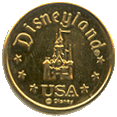
www.parkpennies.com/tokens/tokens/disney-tokens.htm

